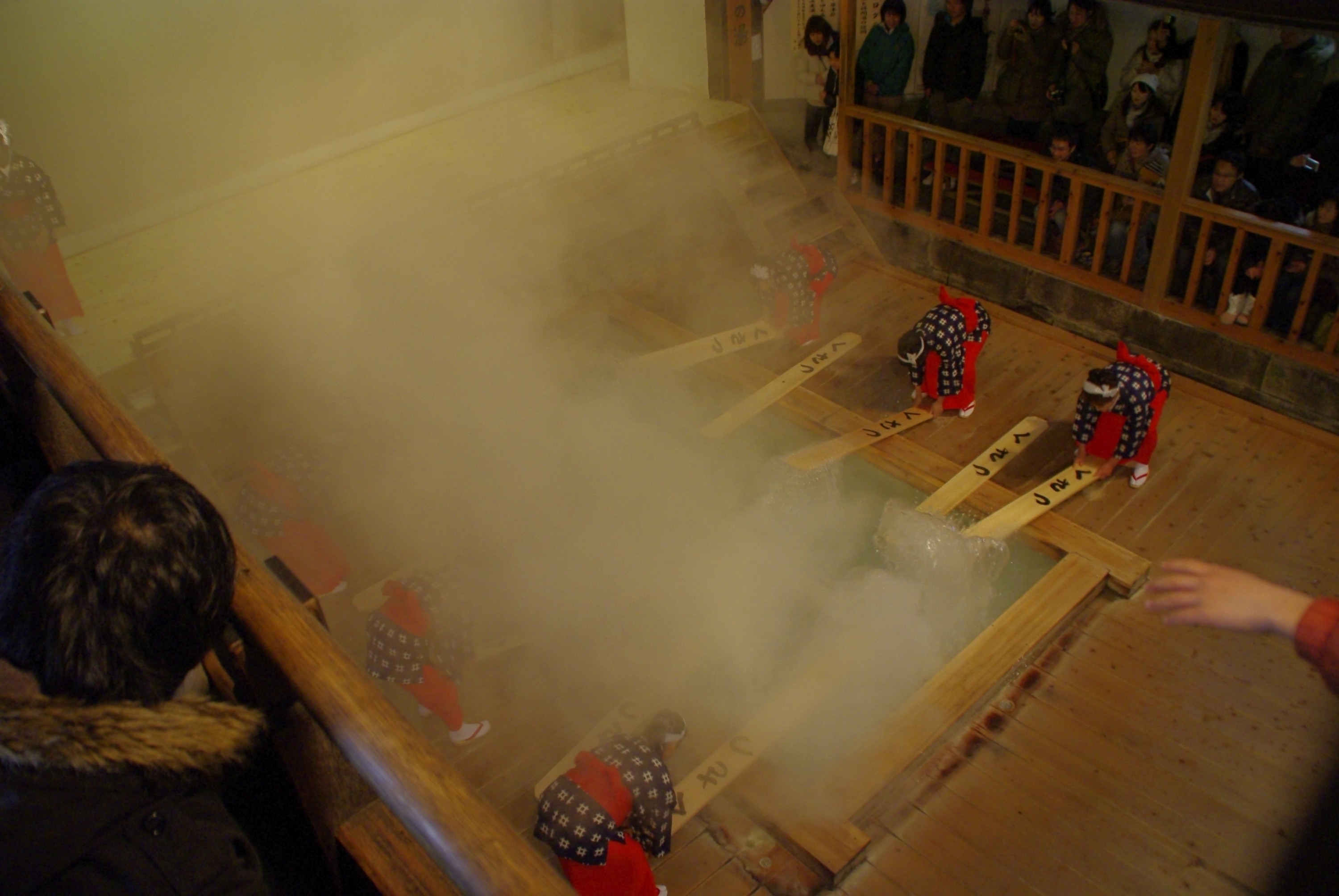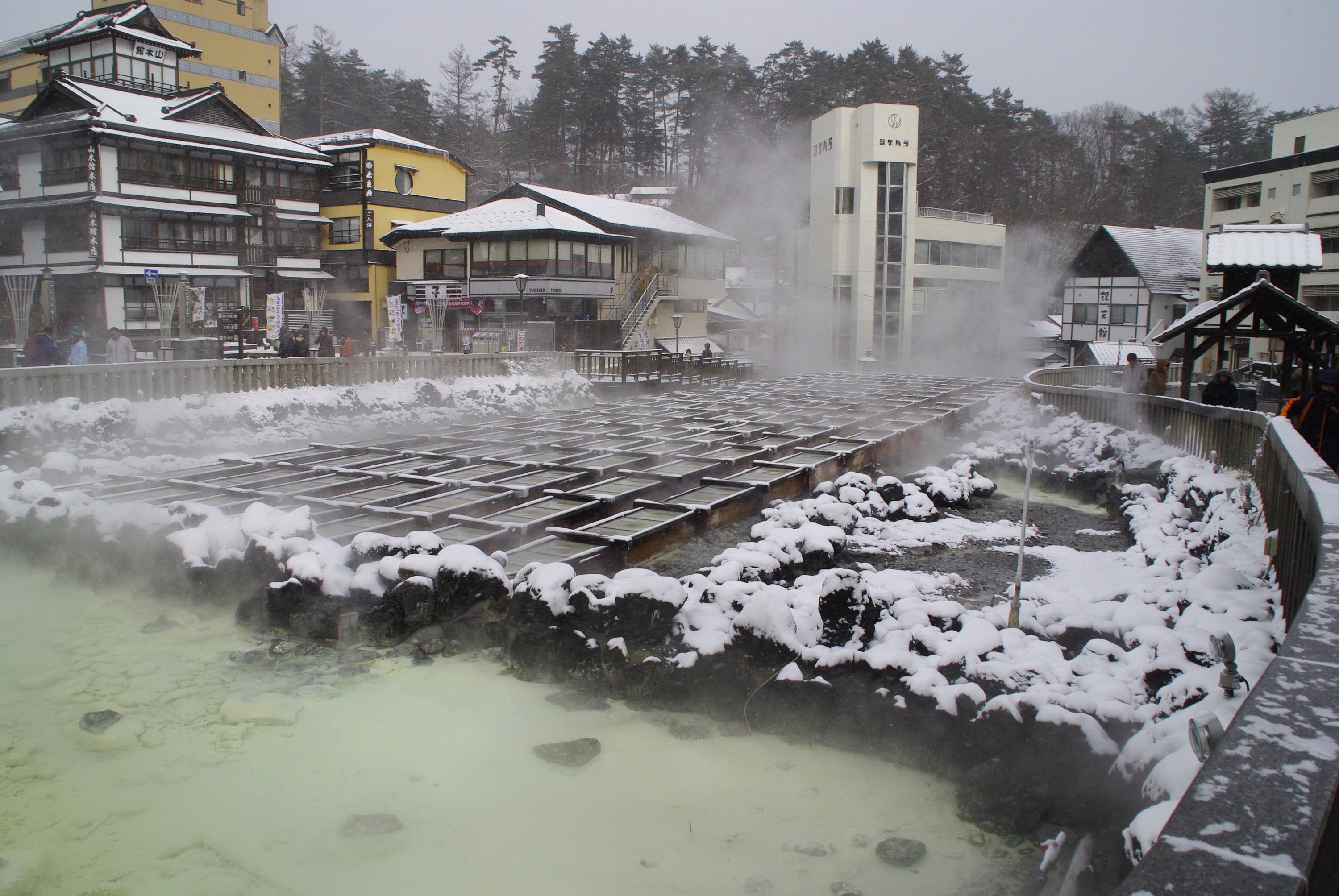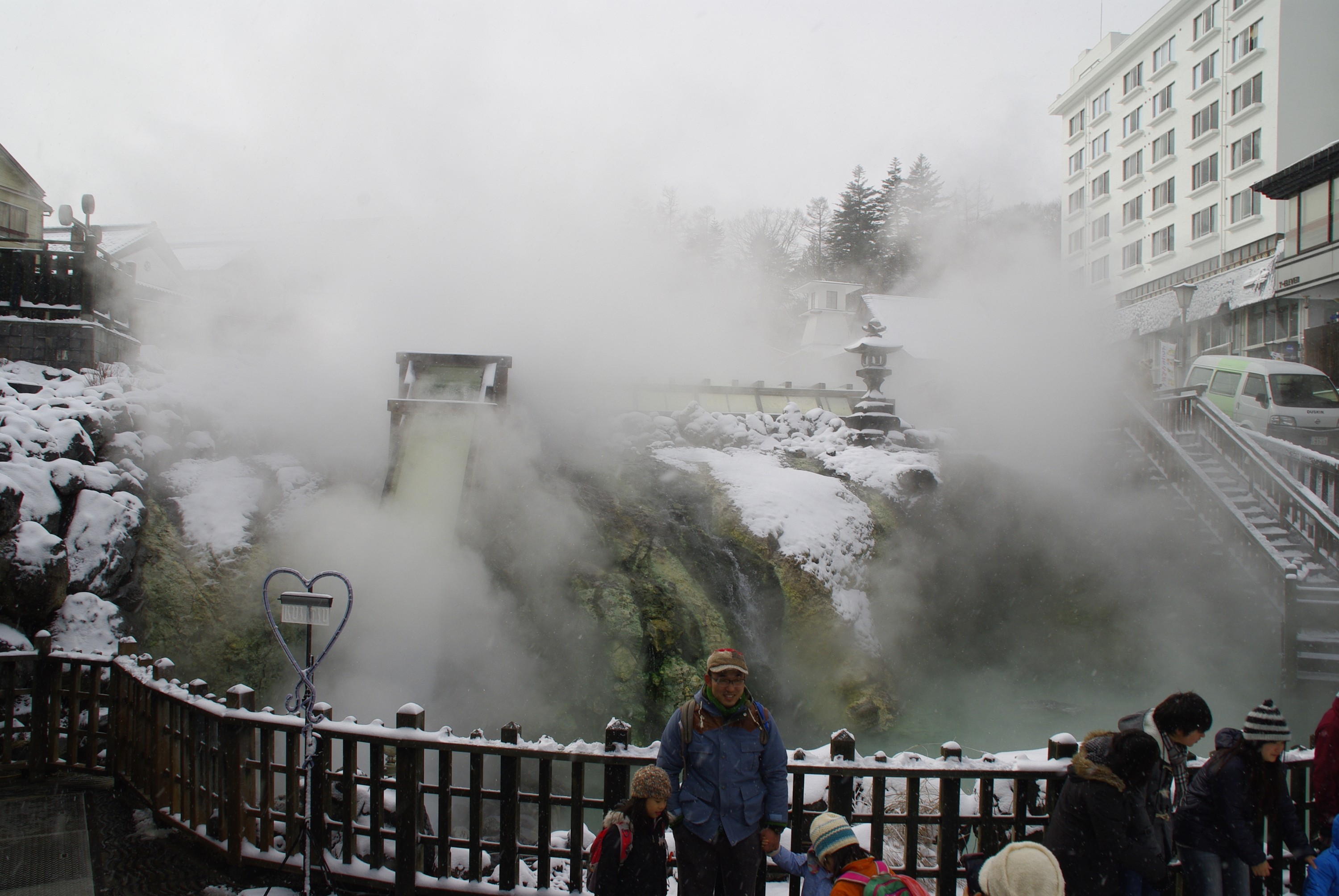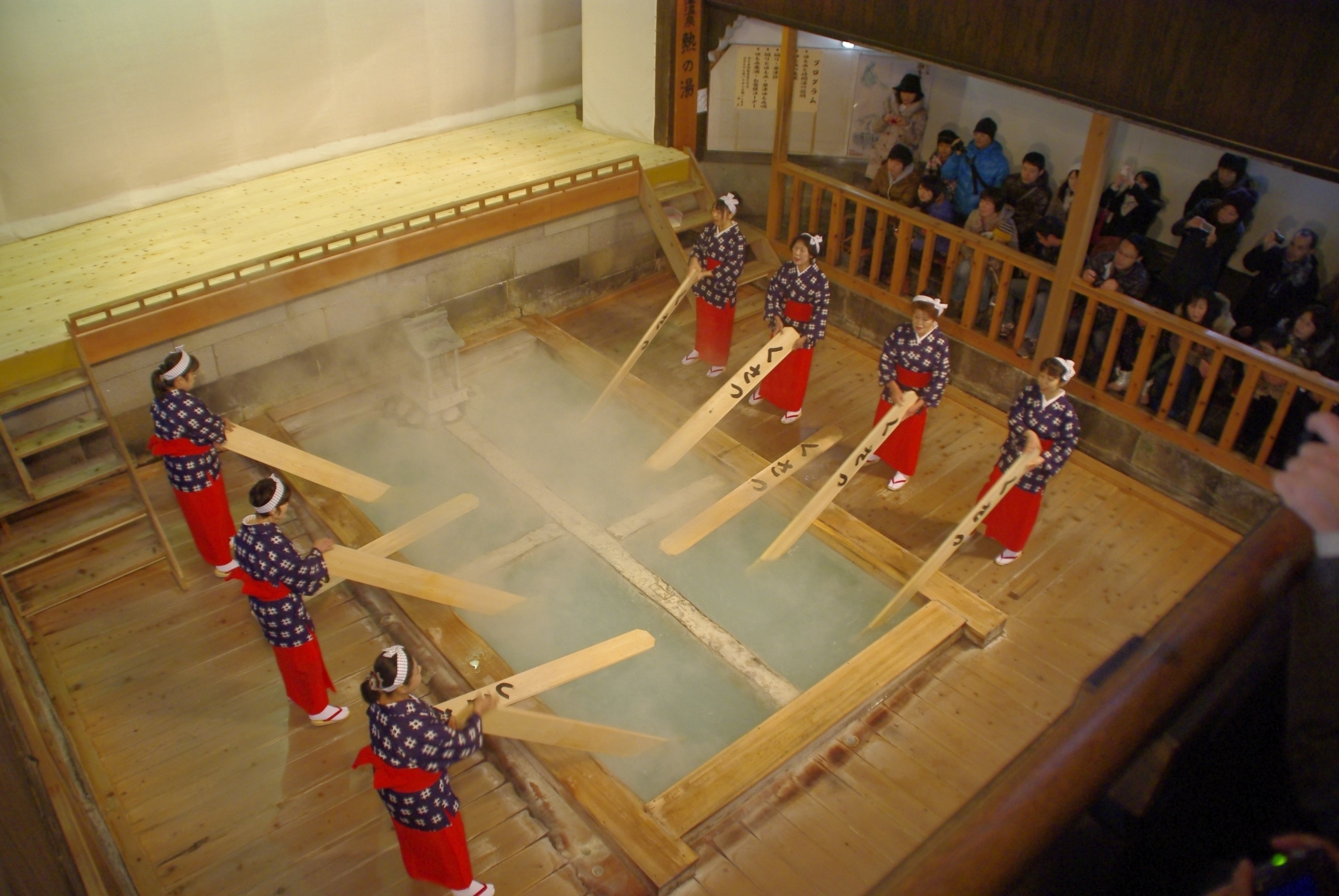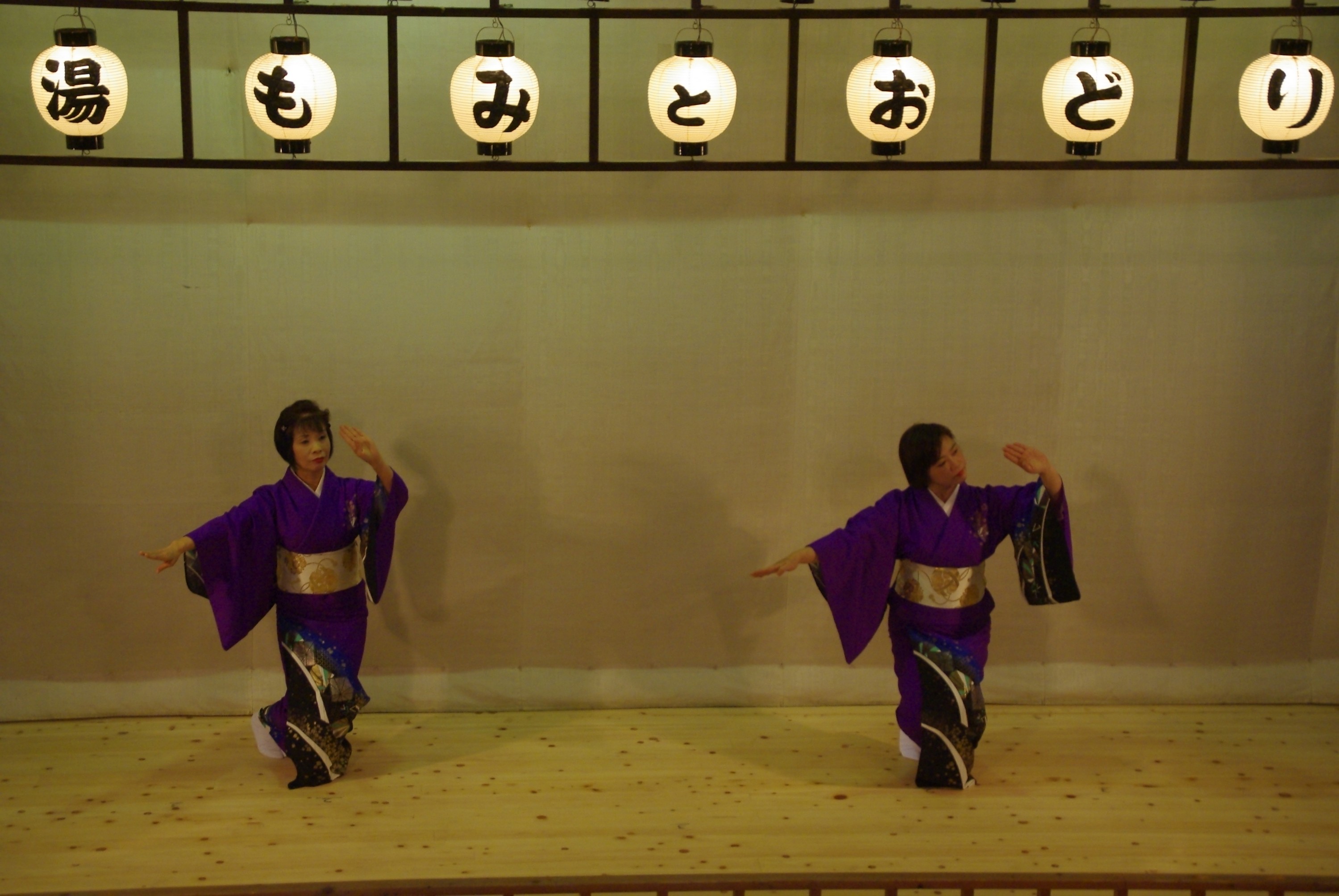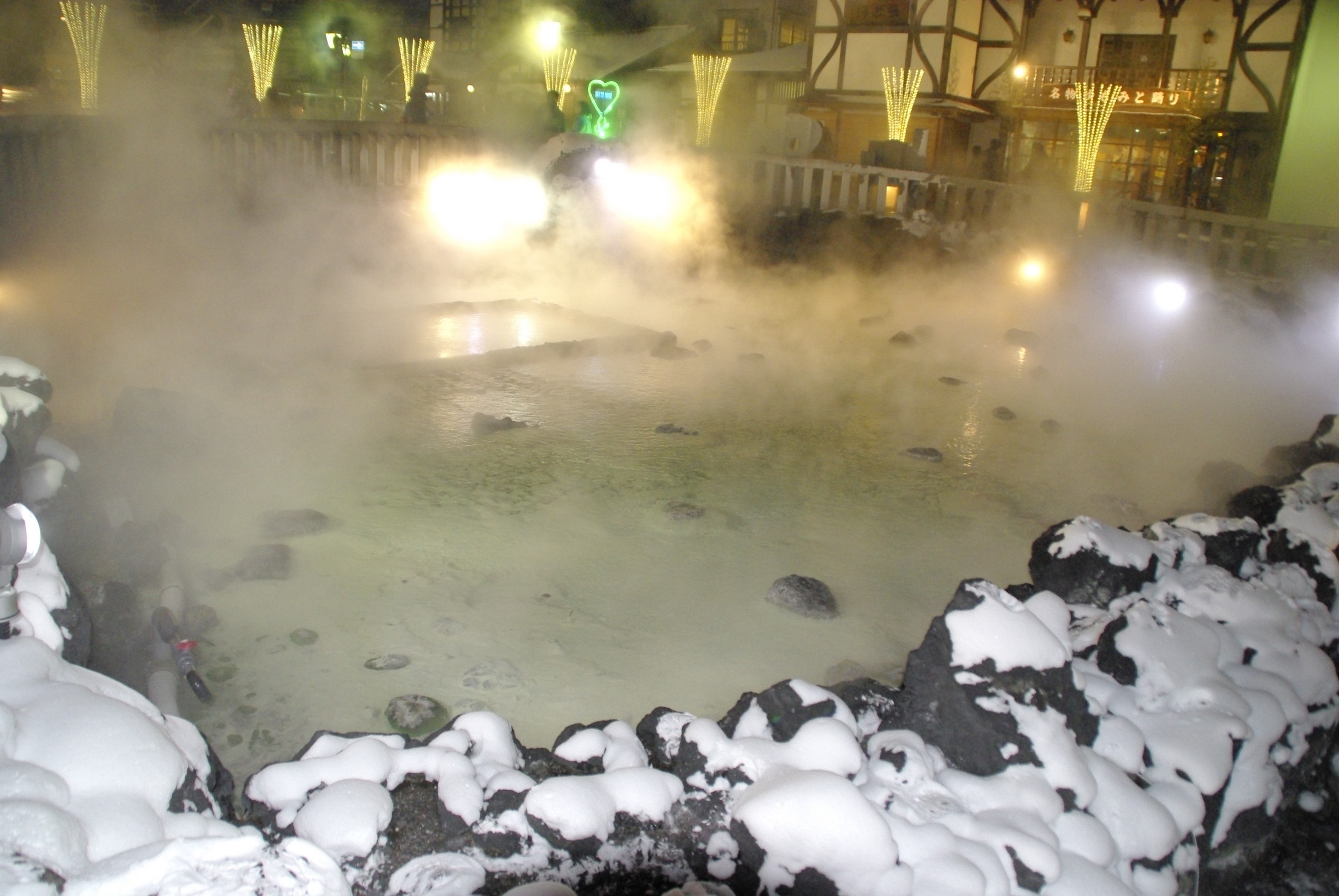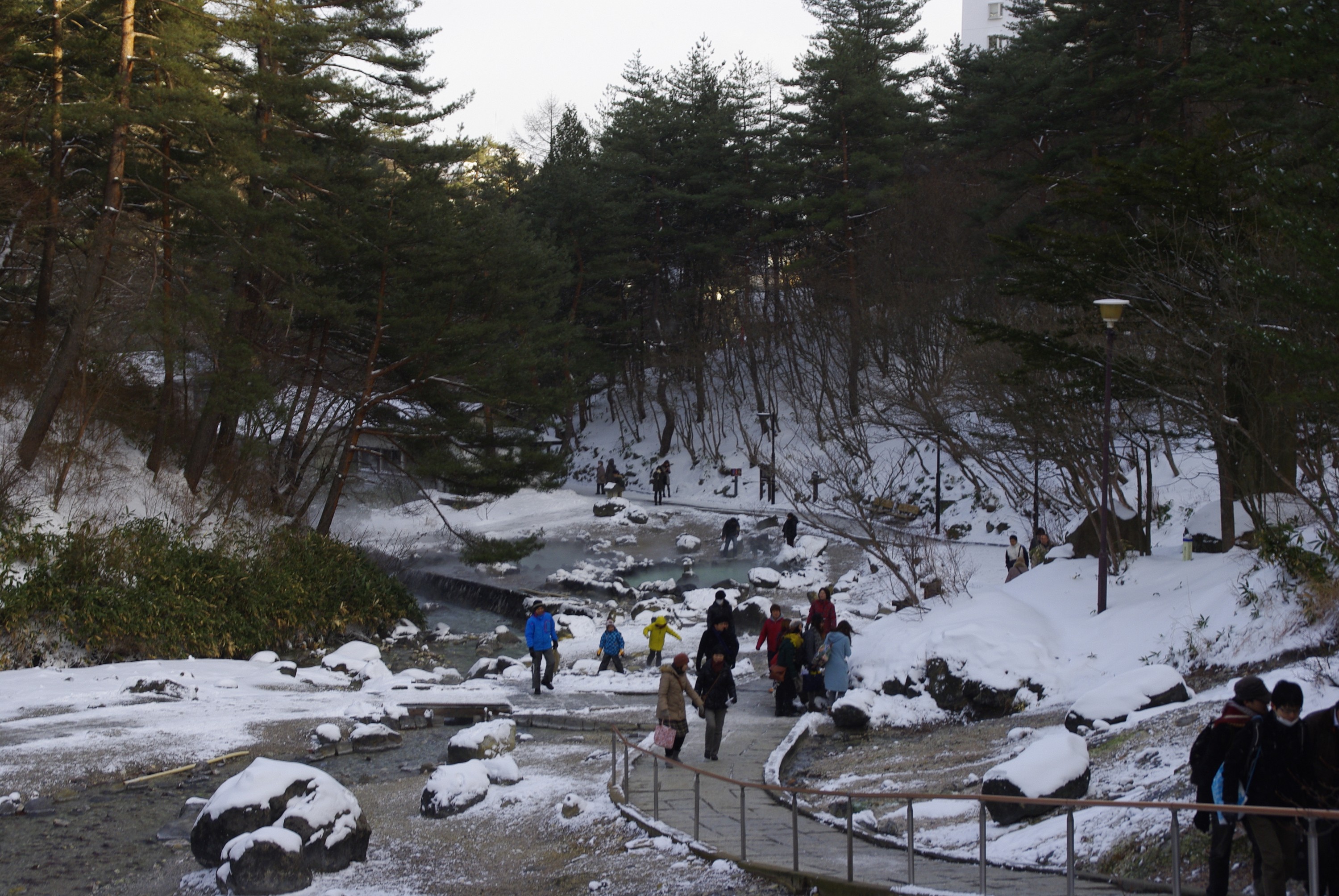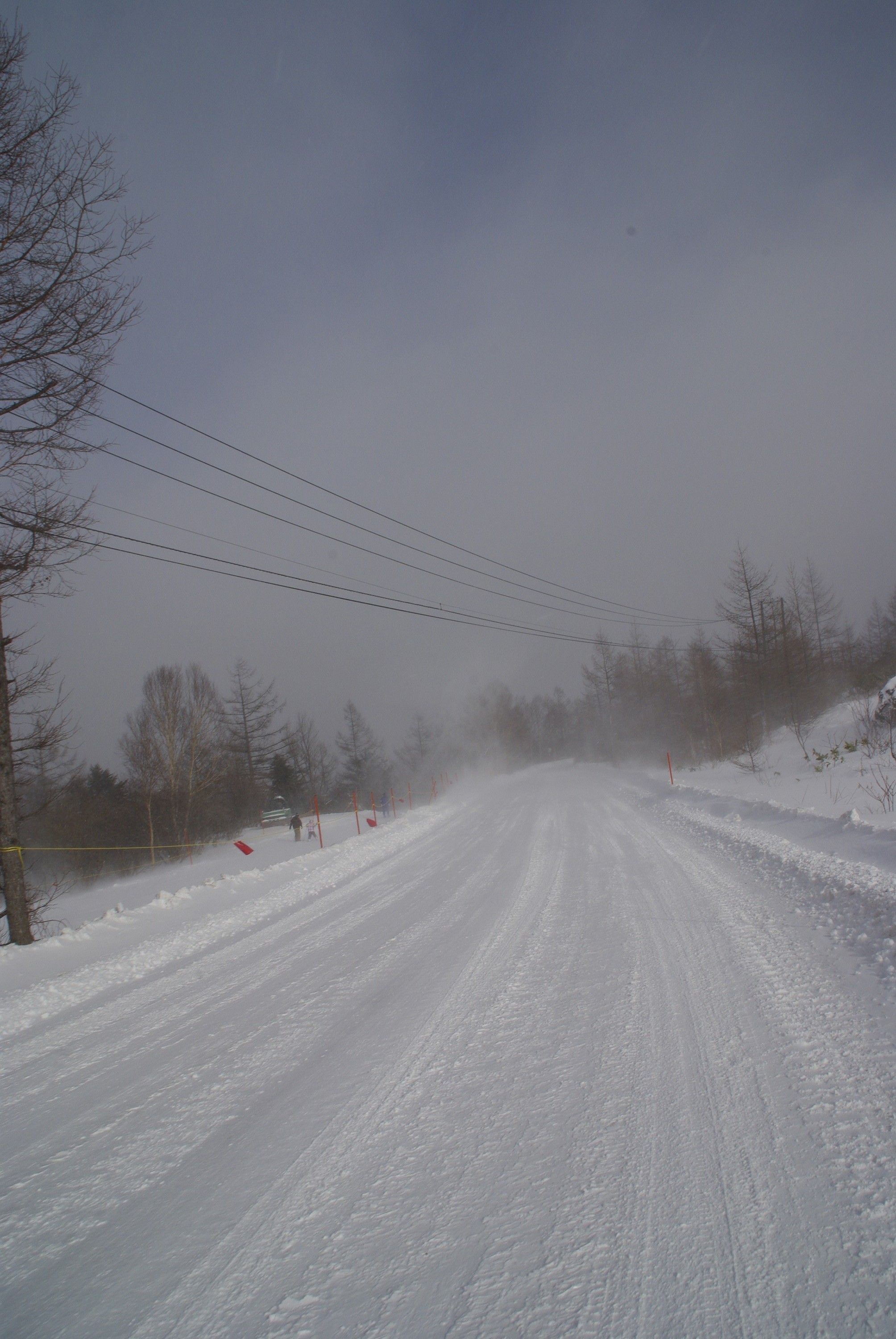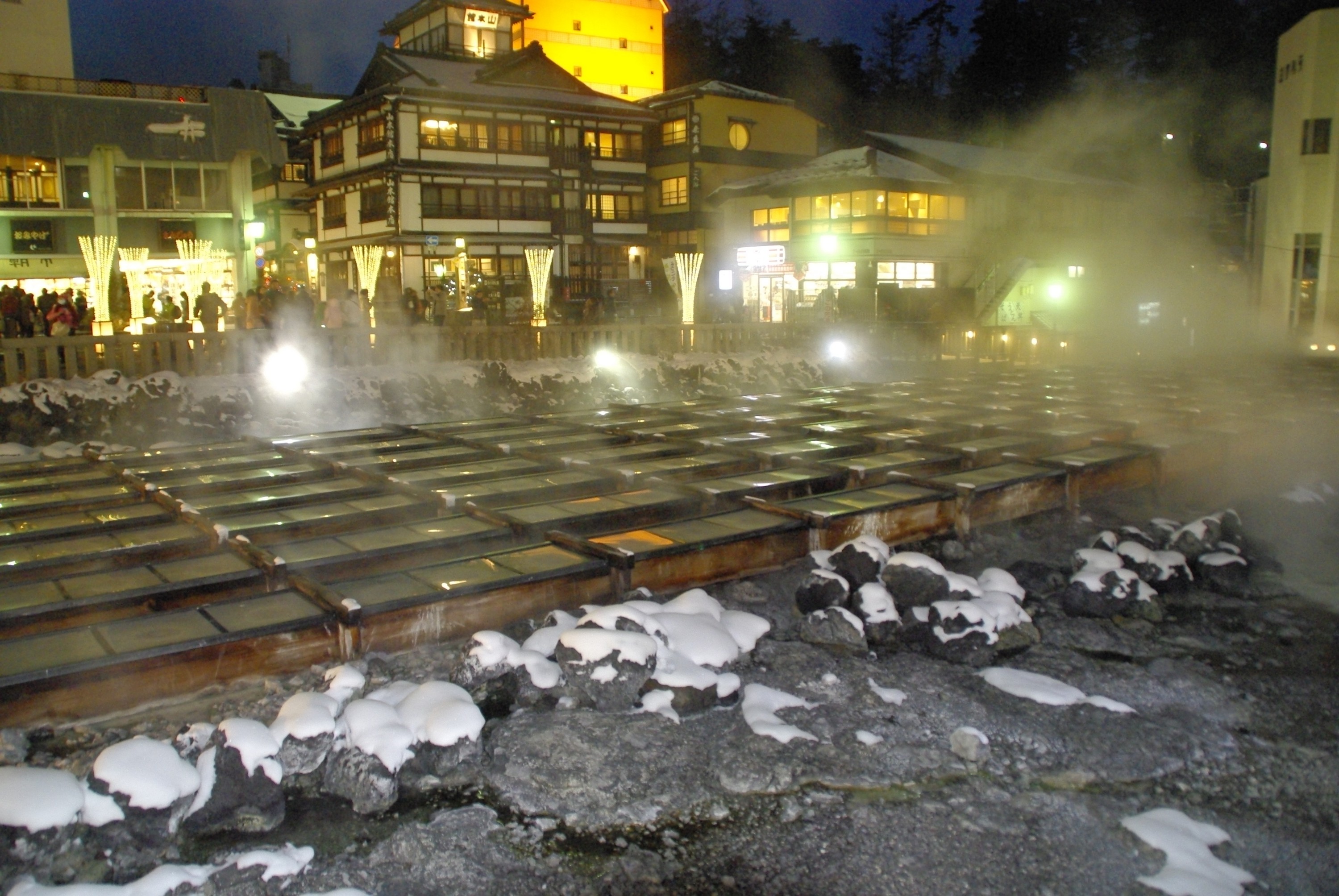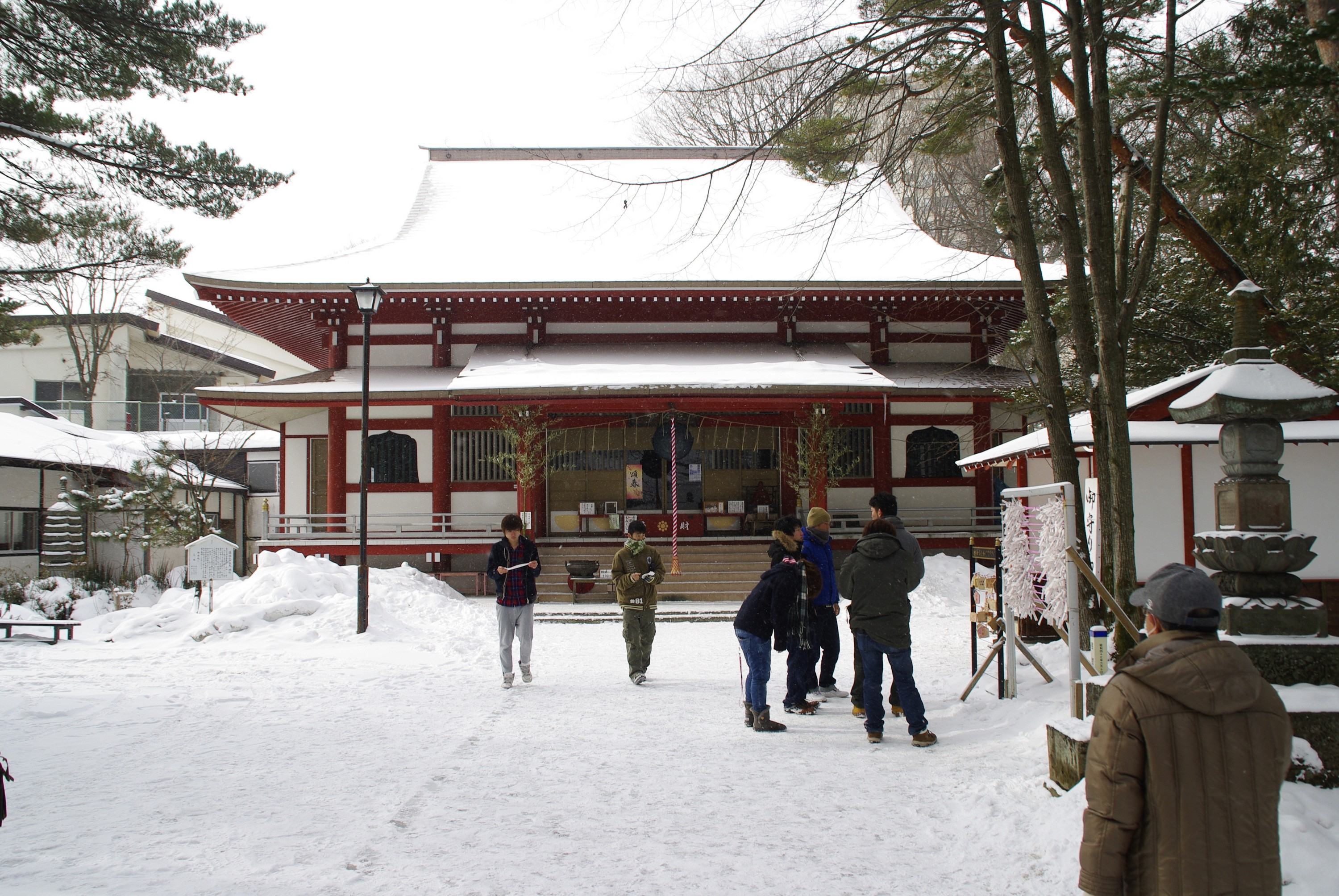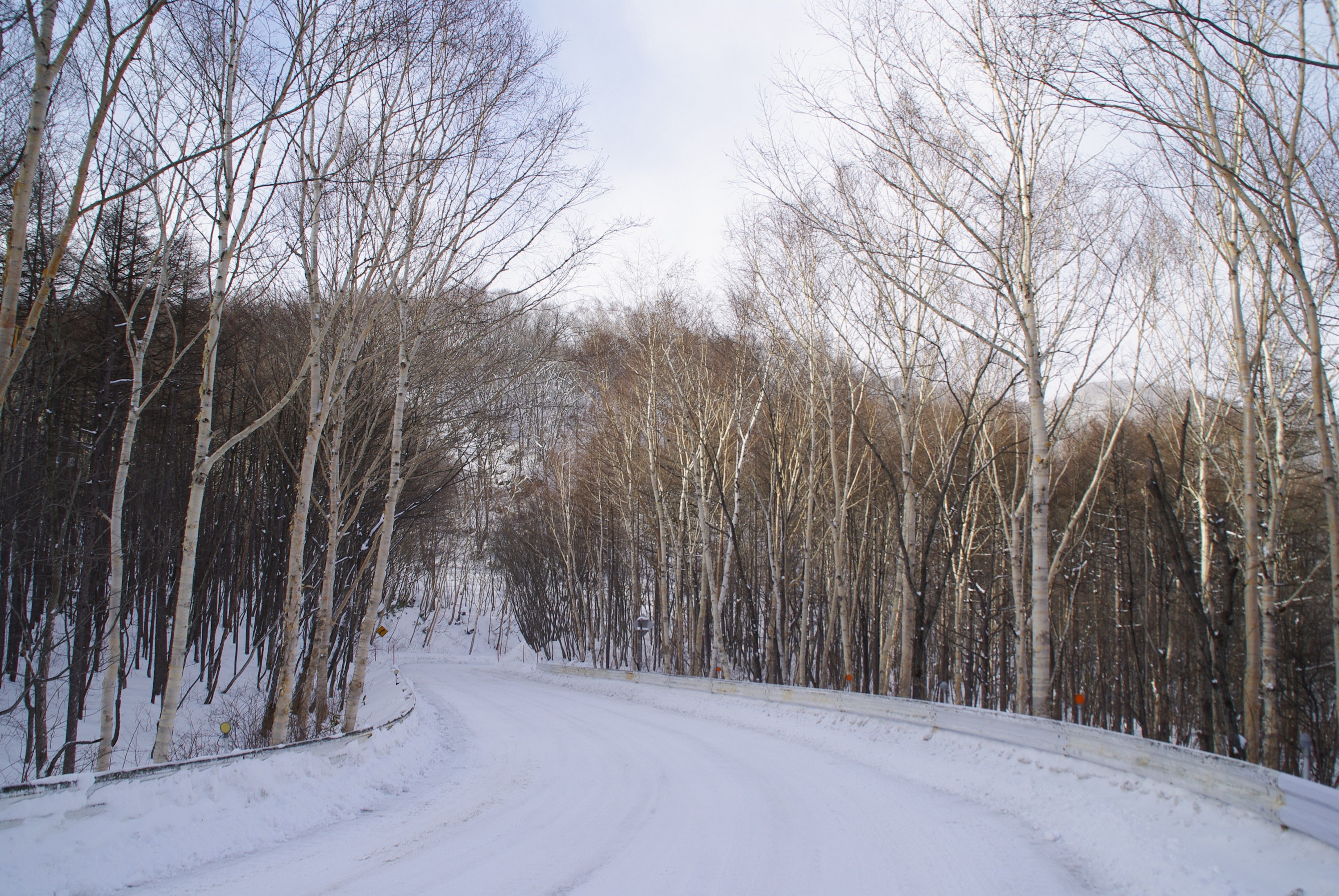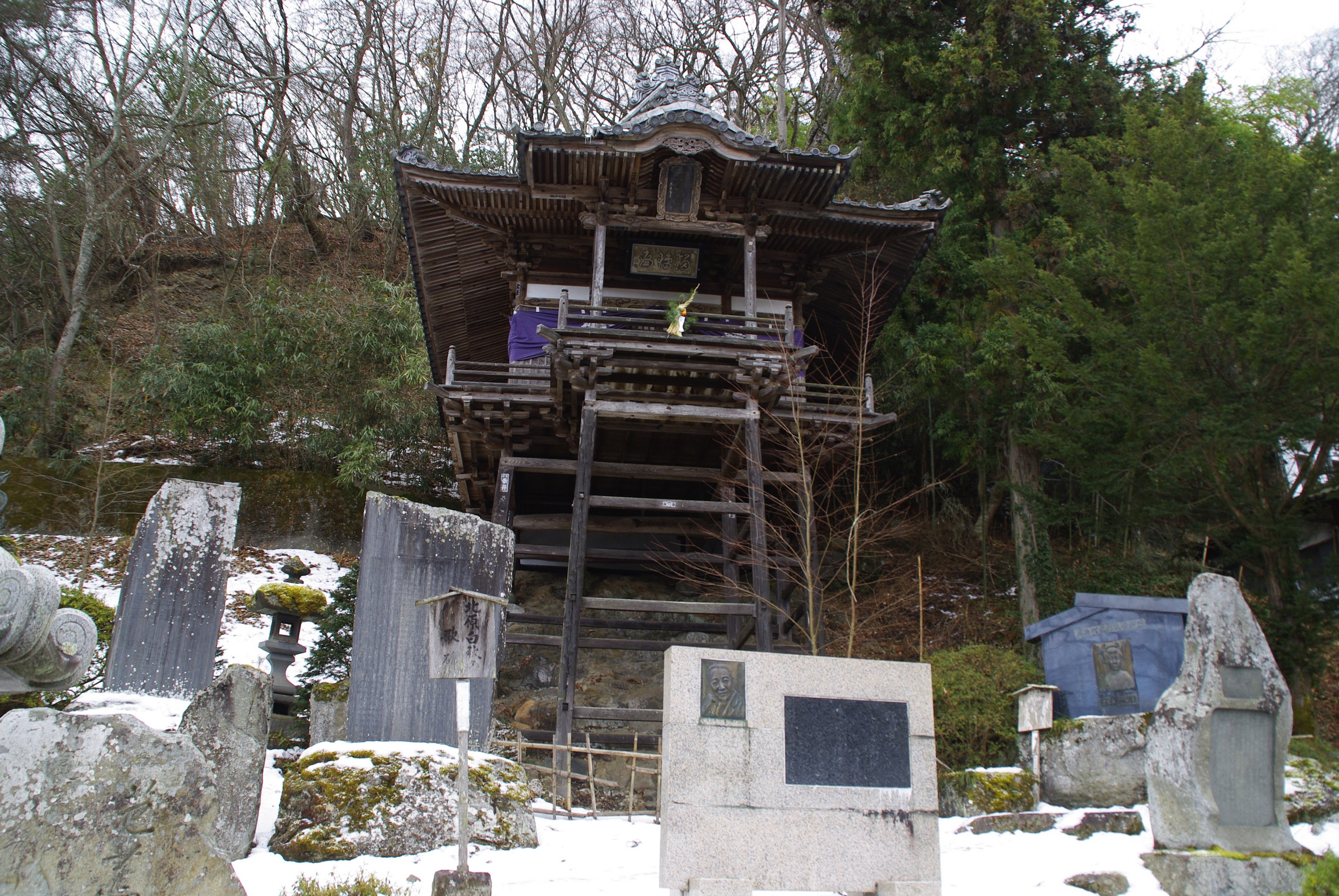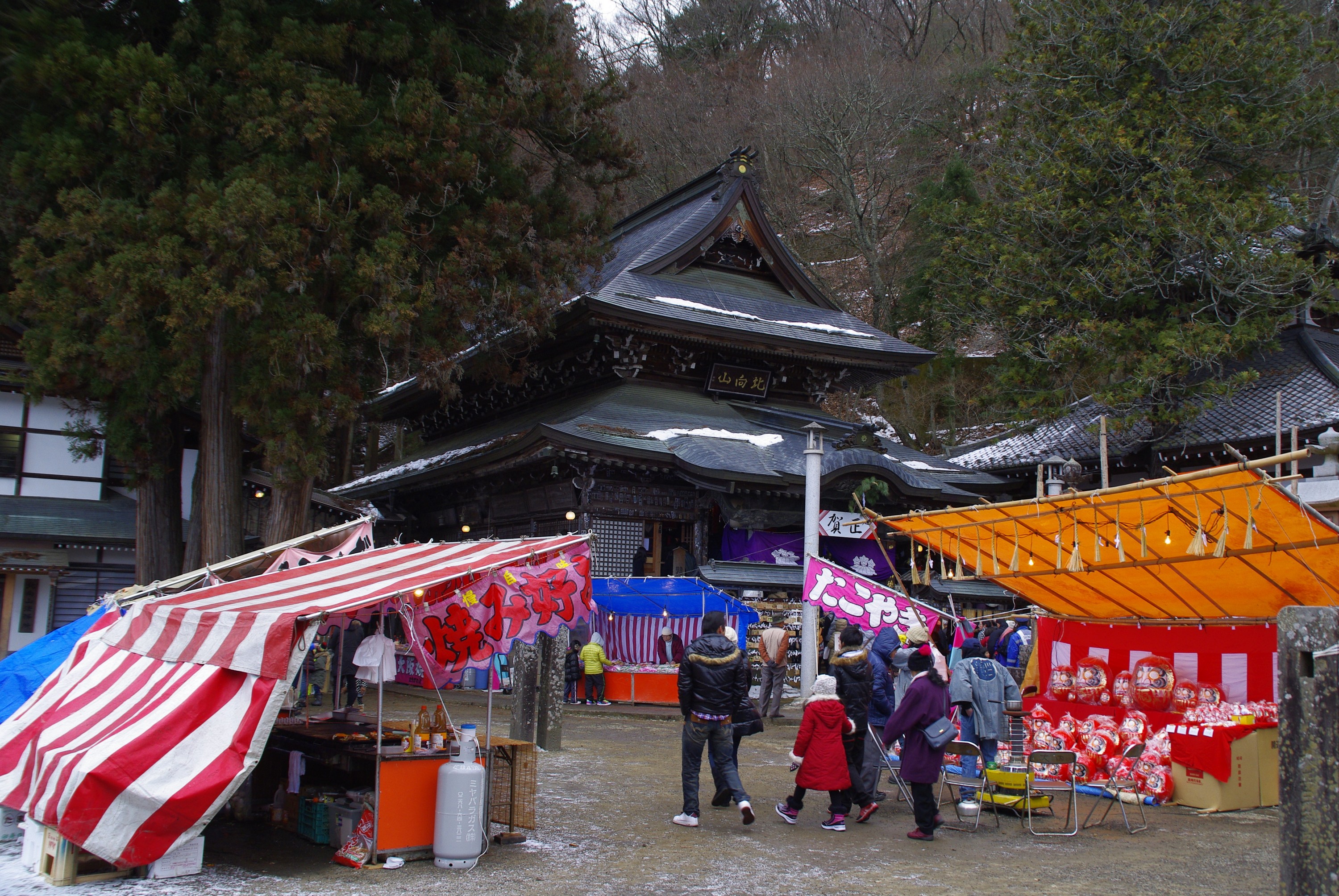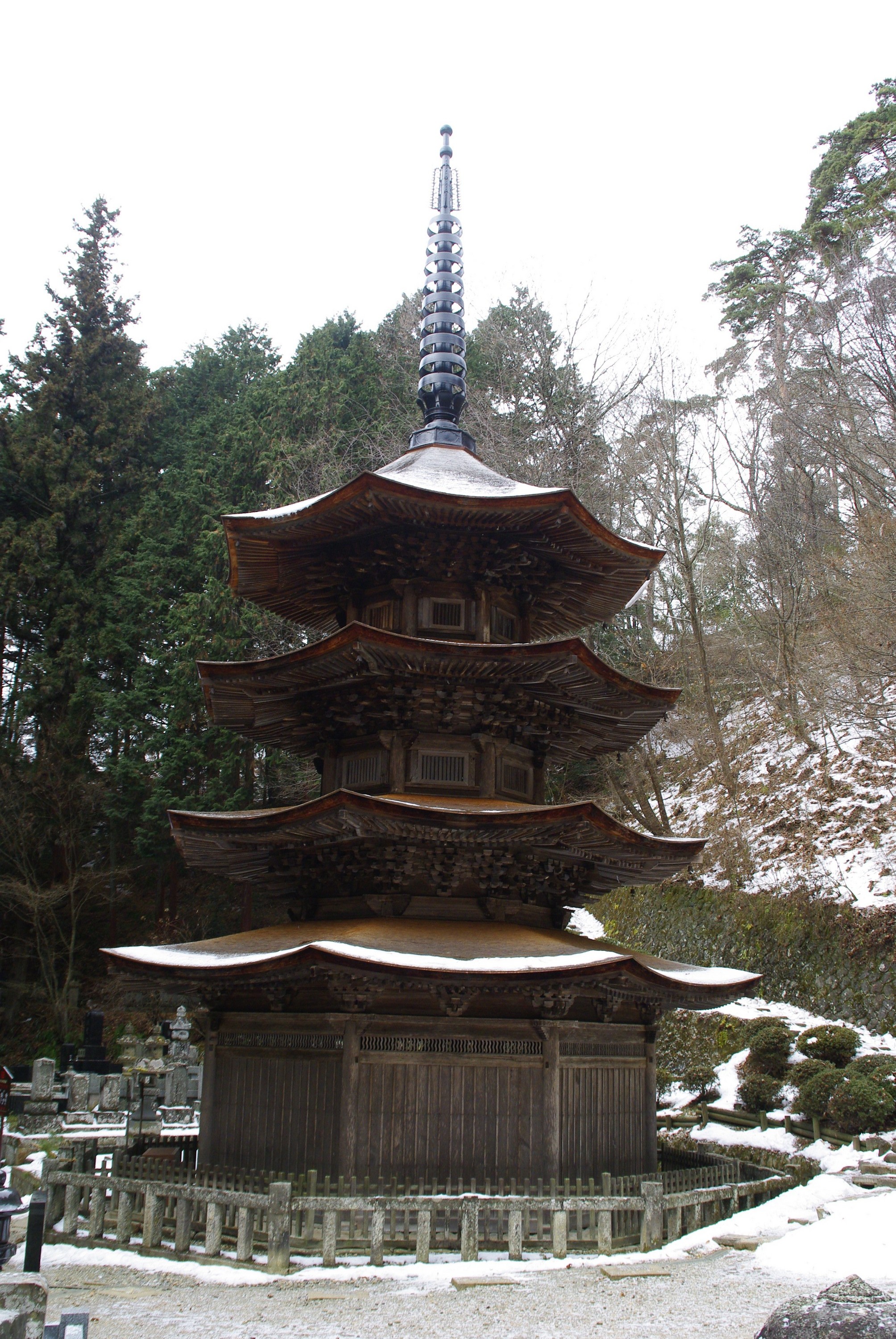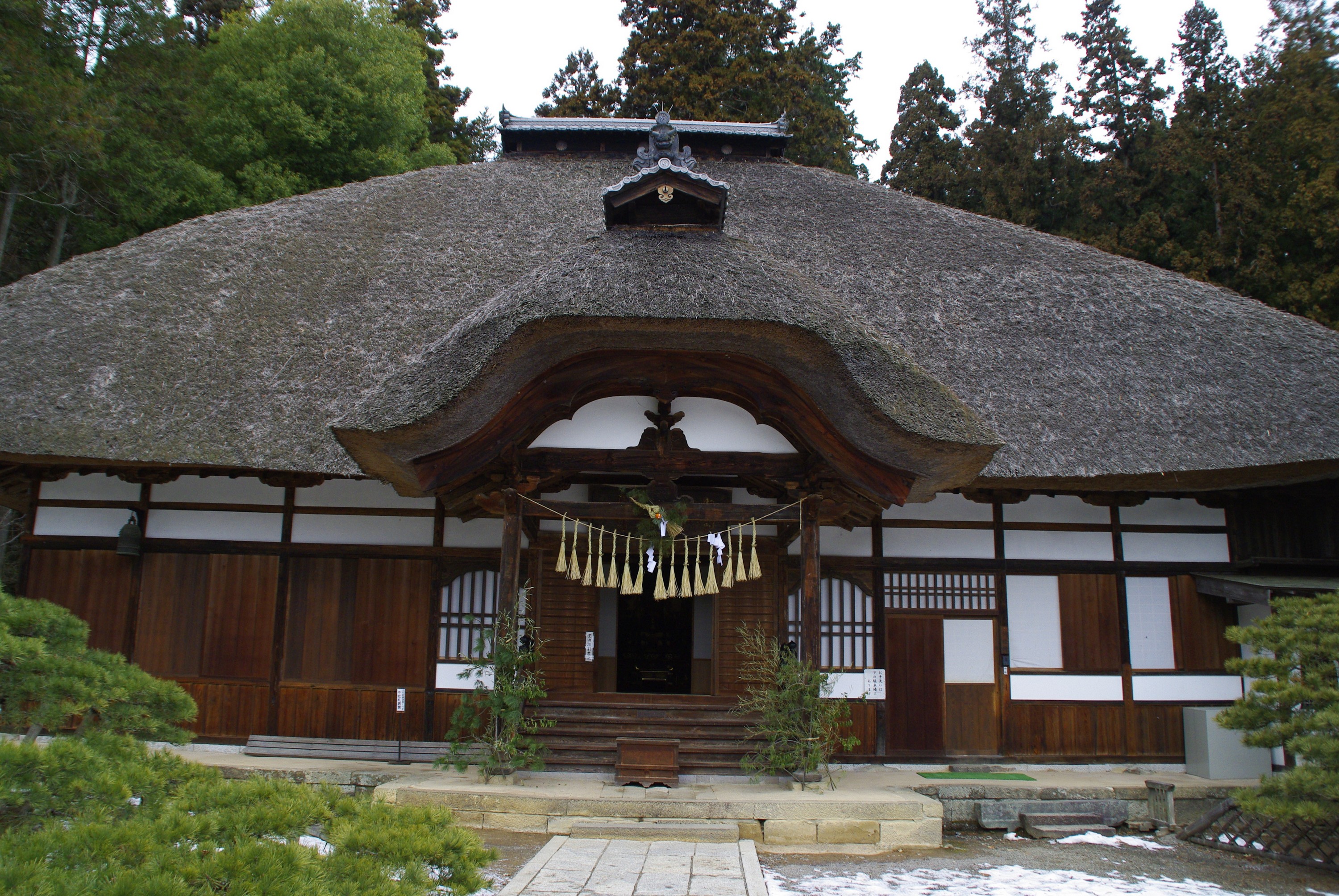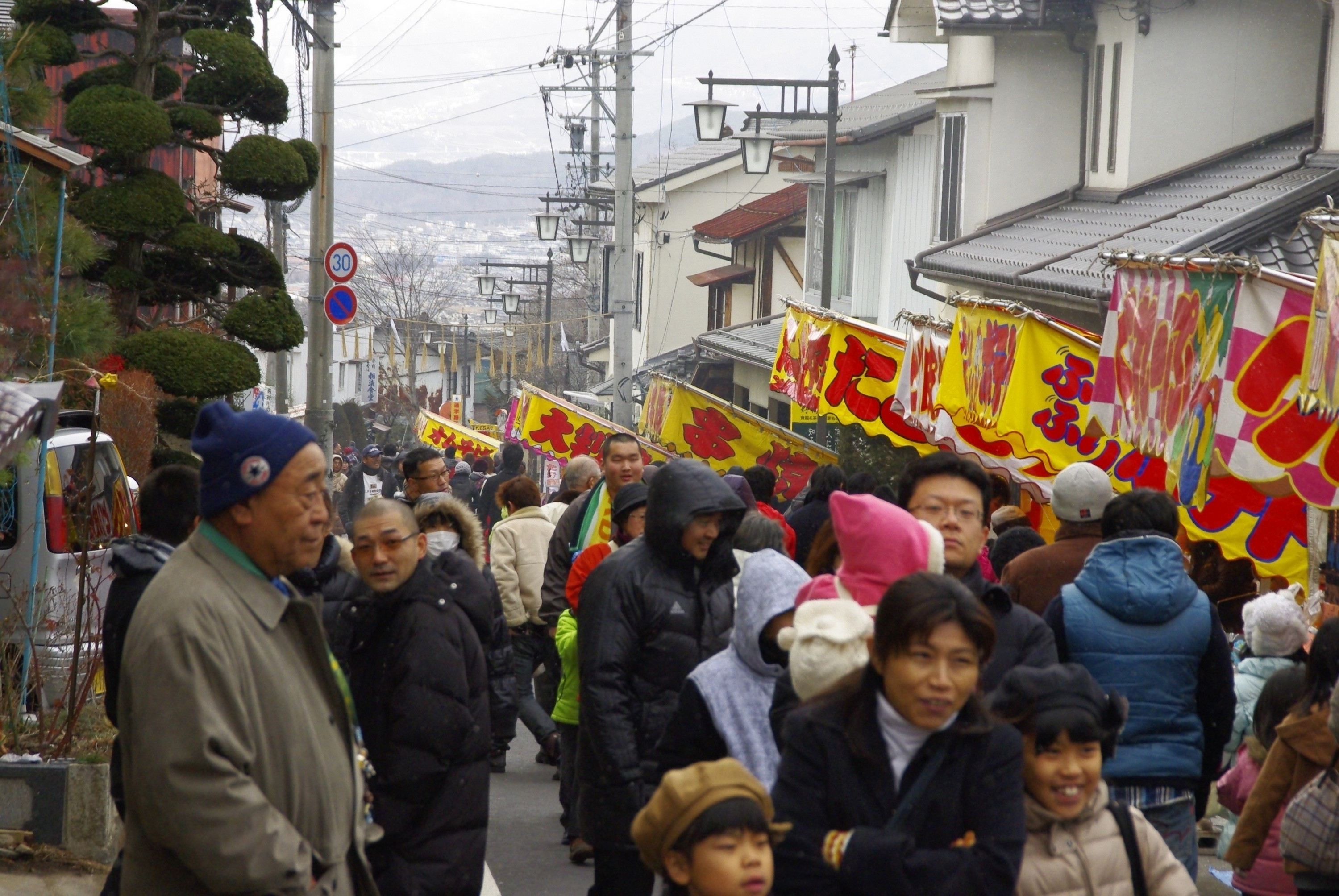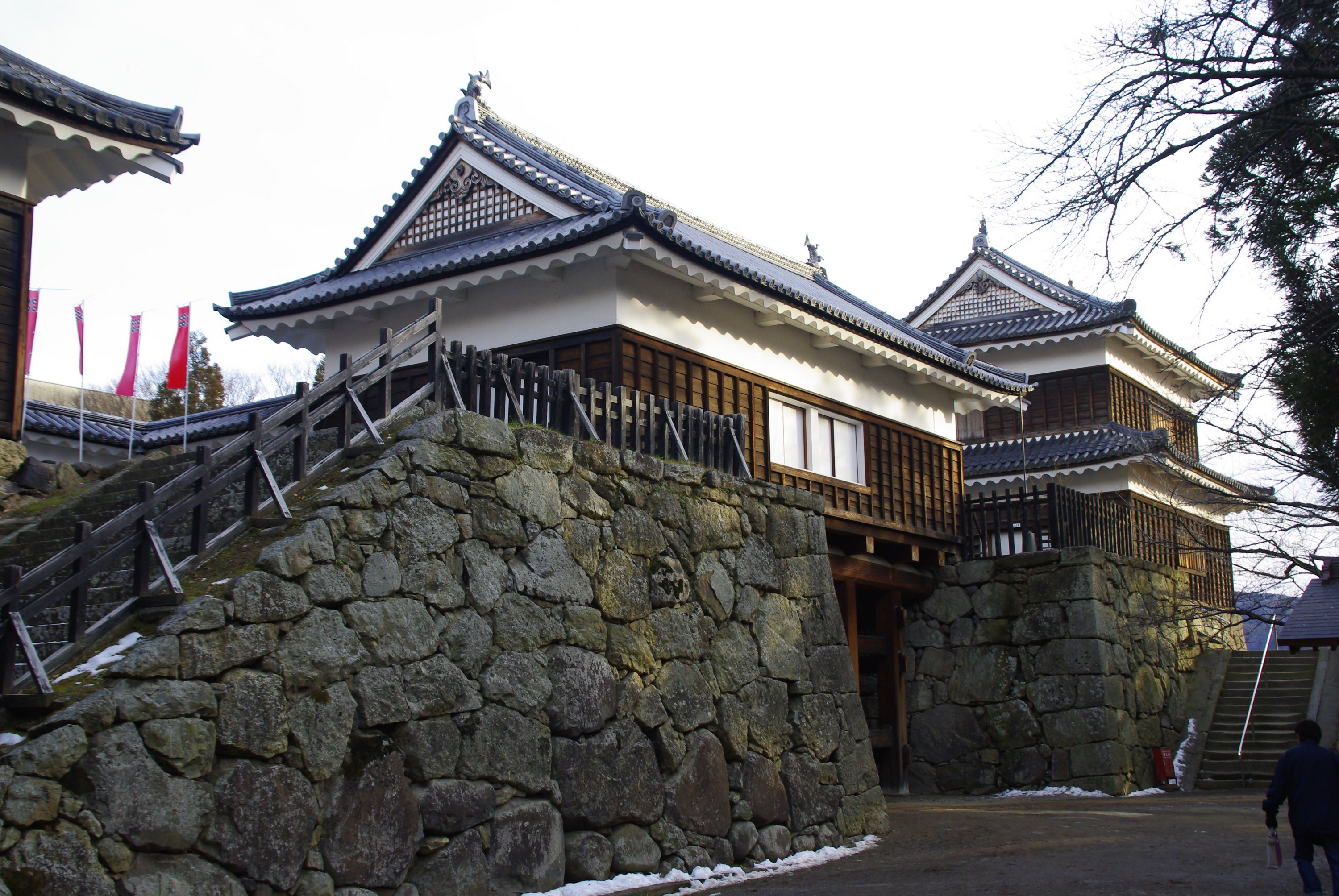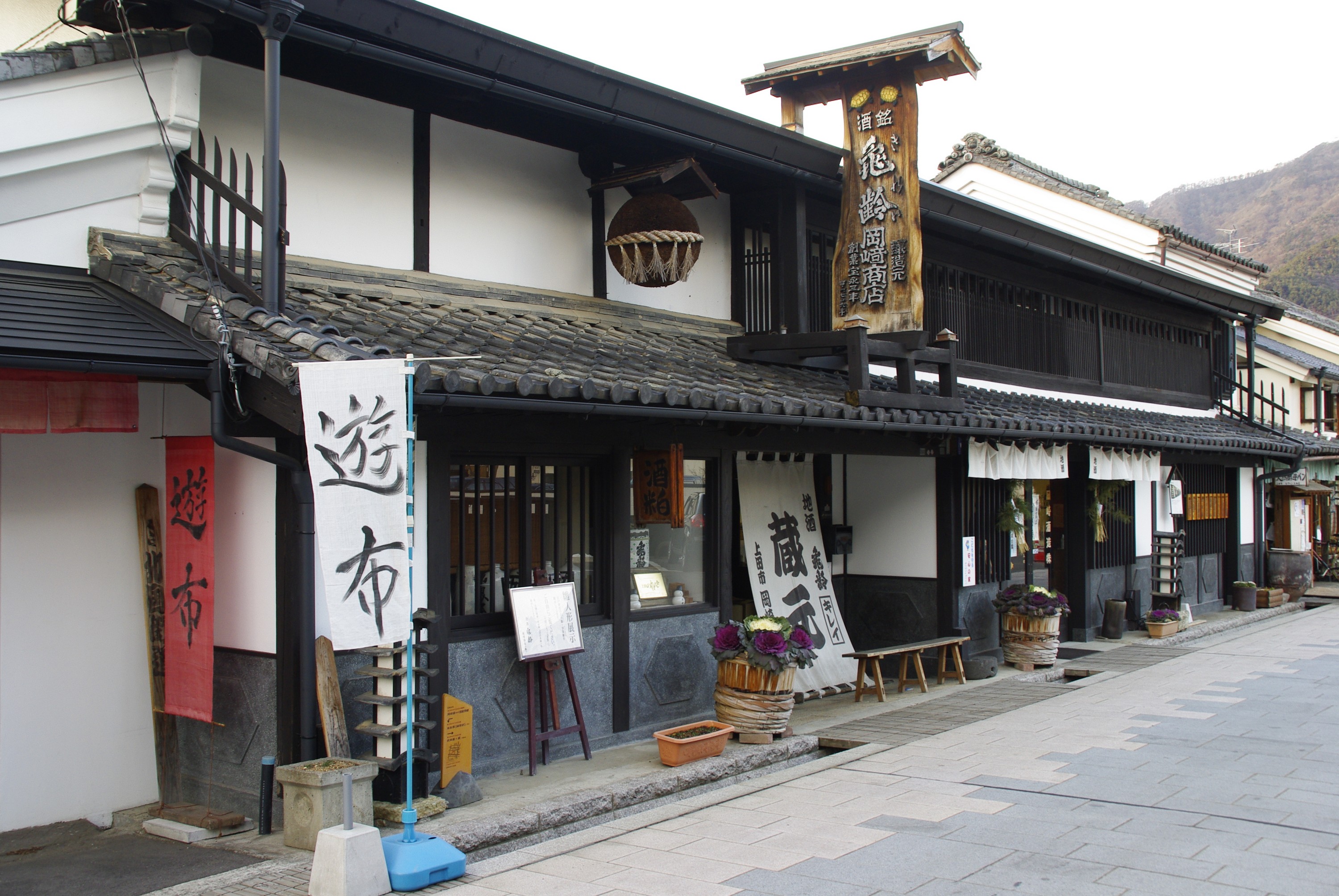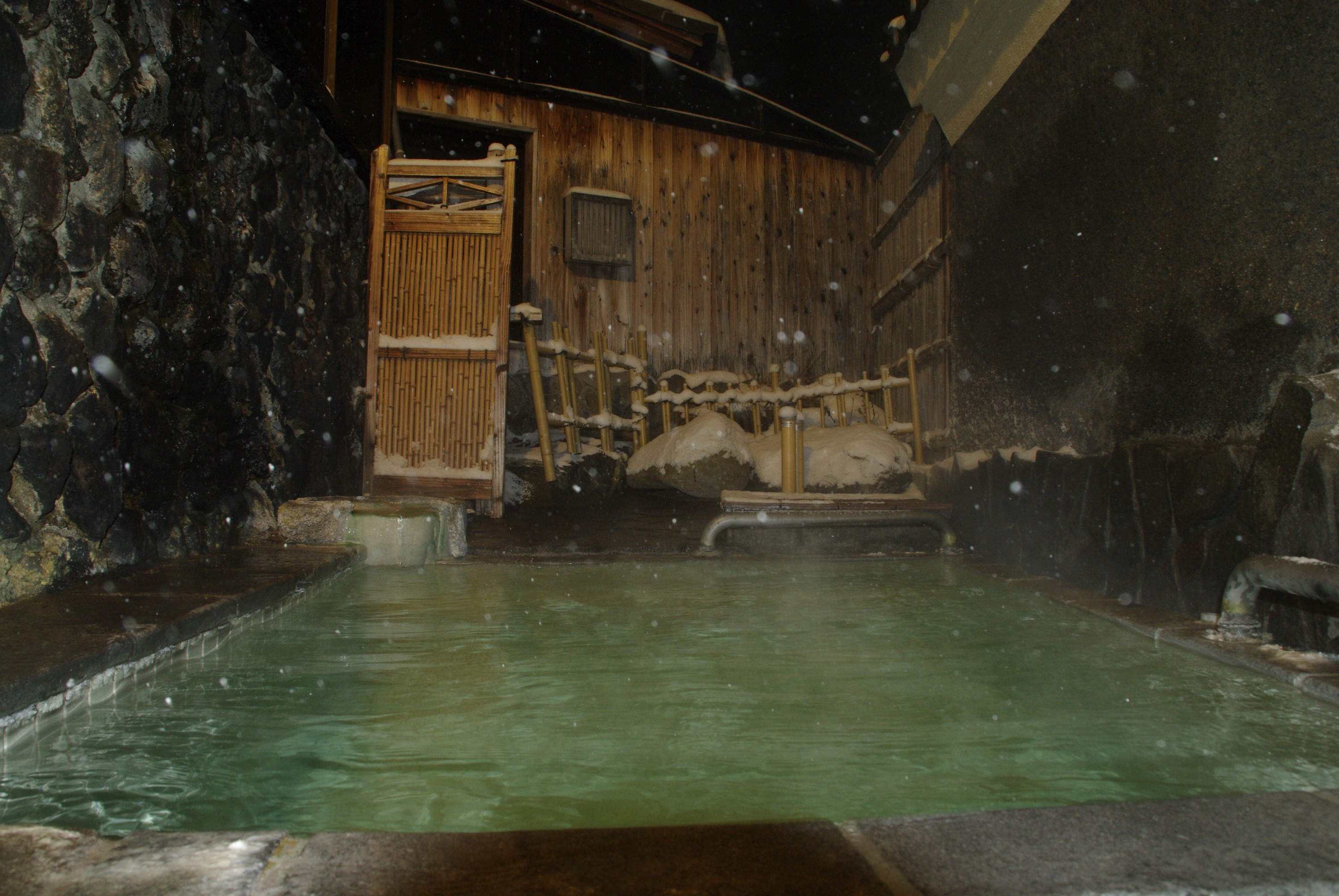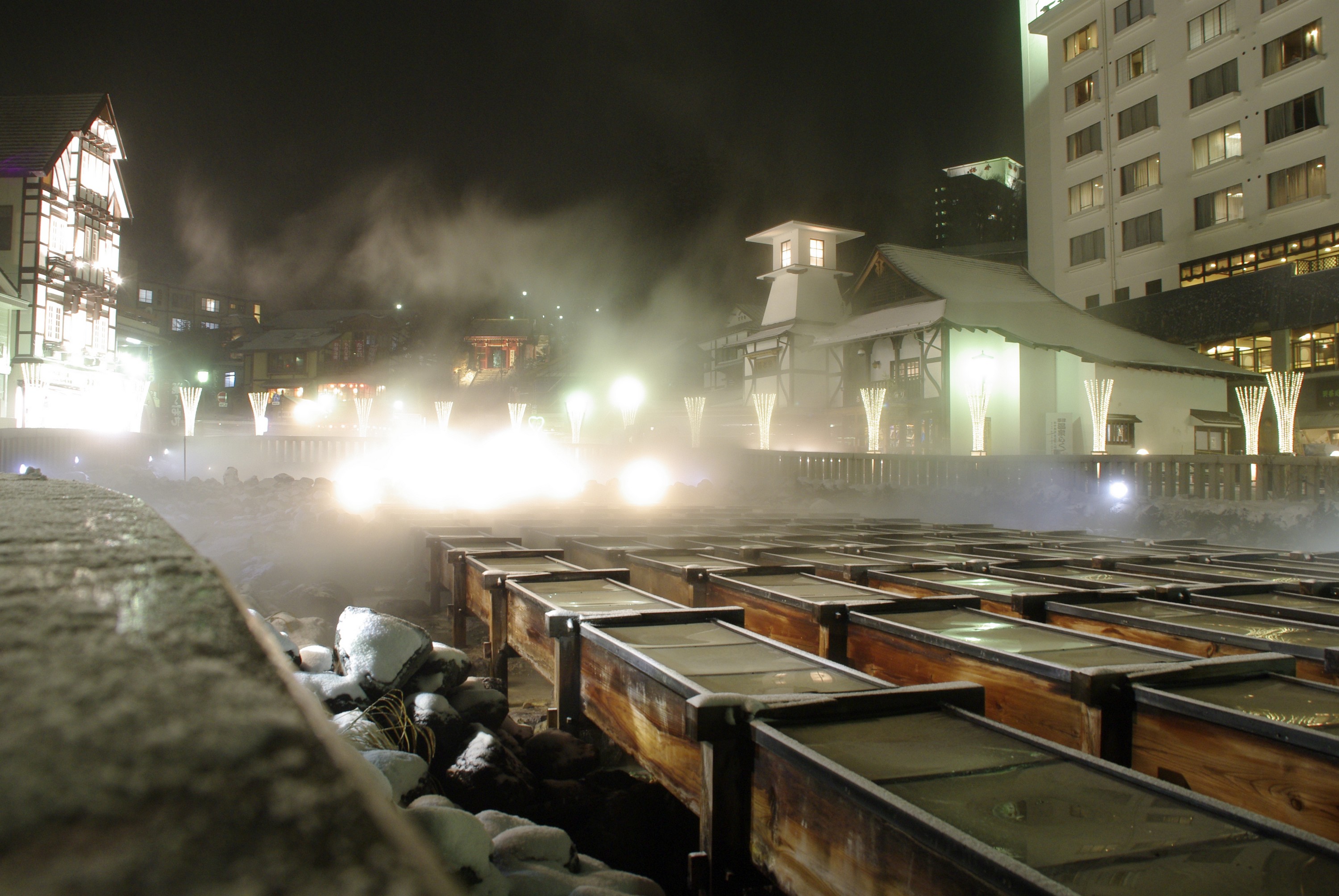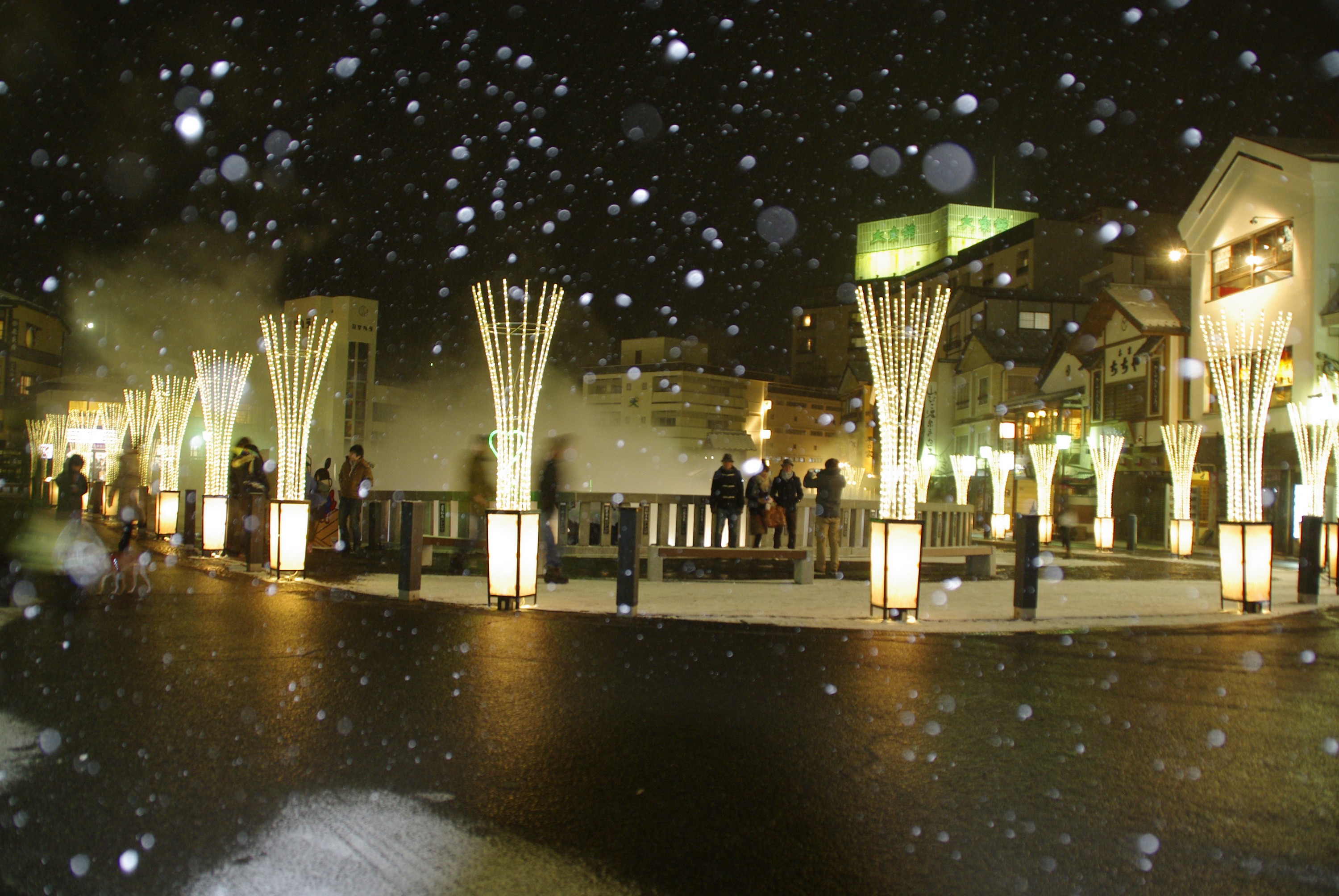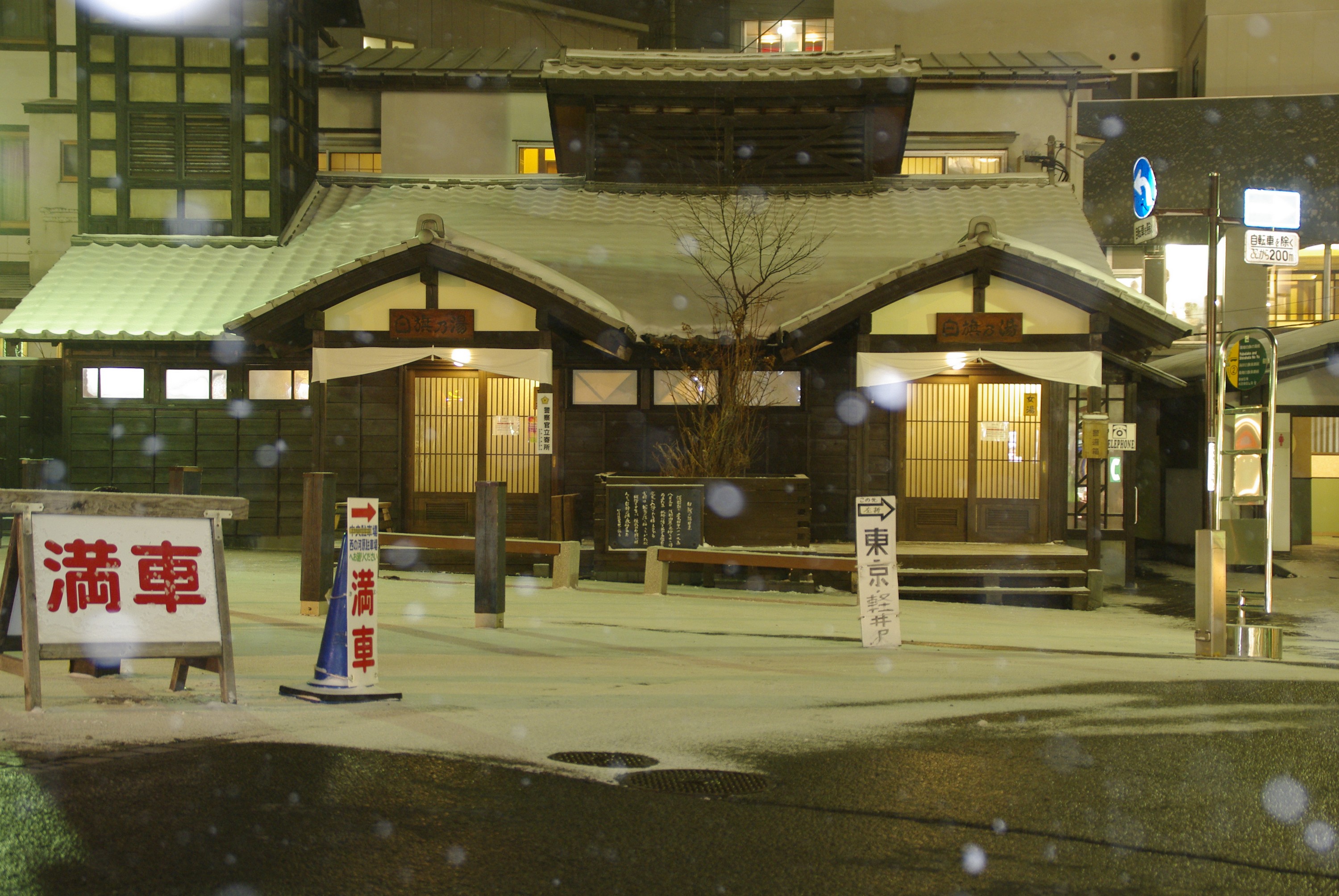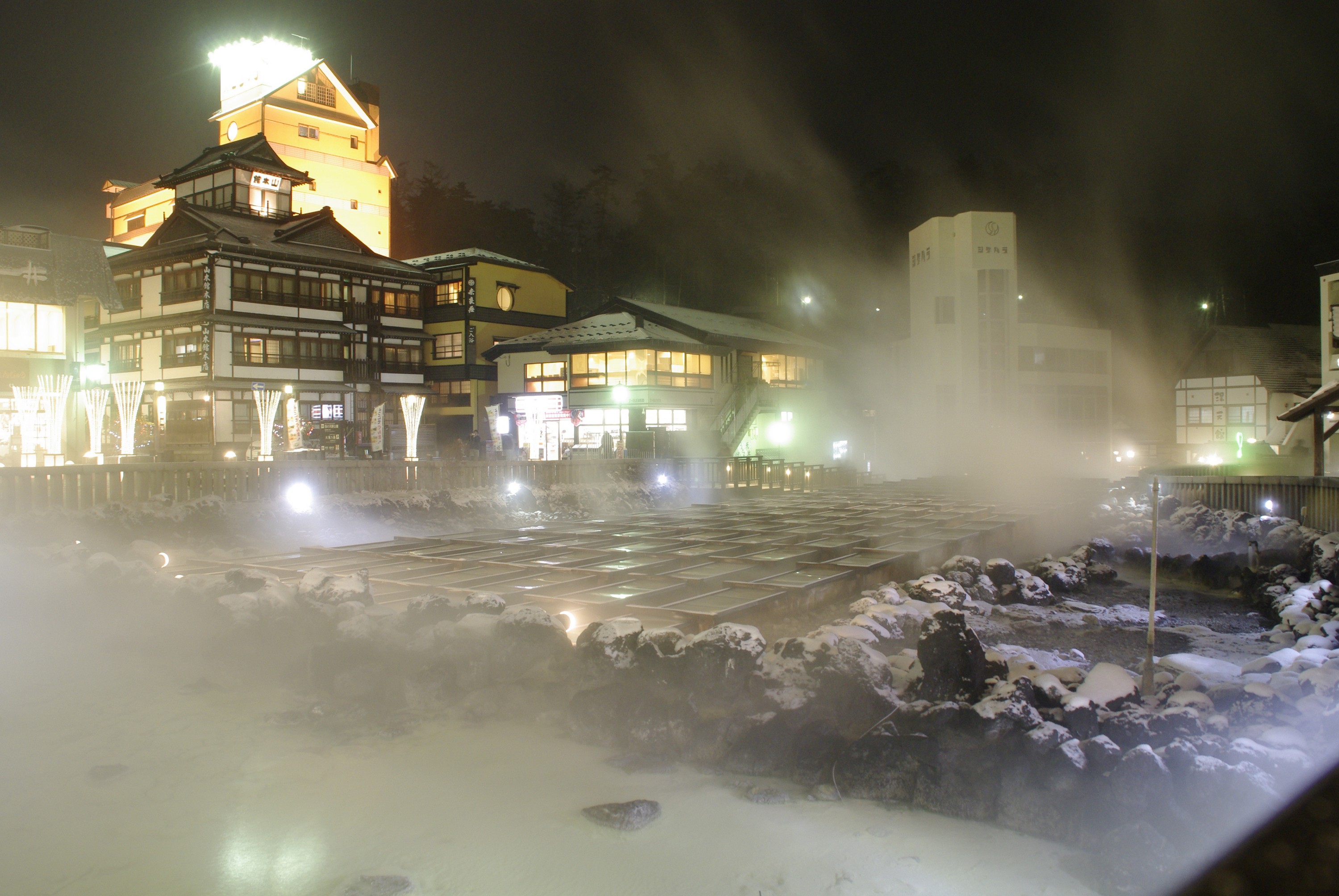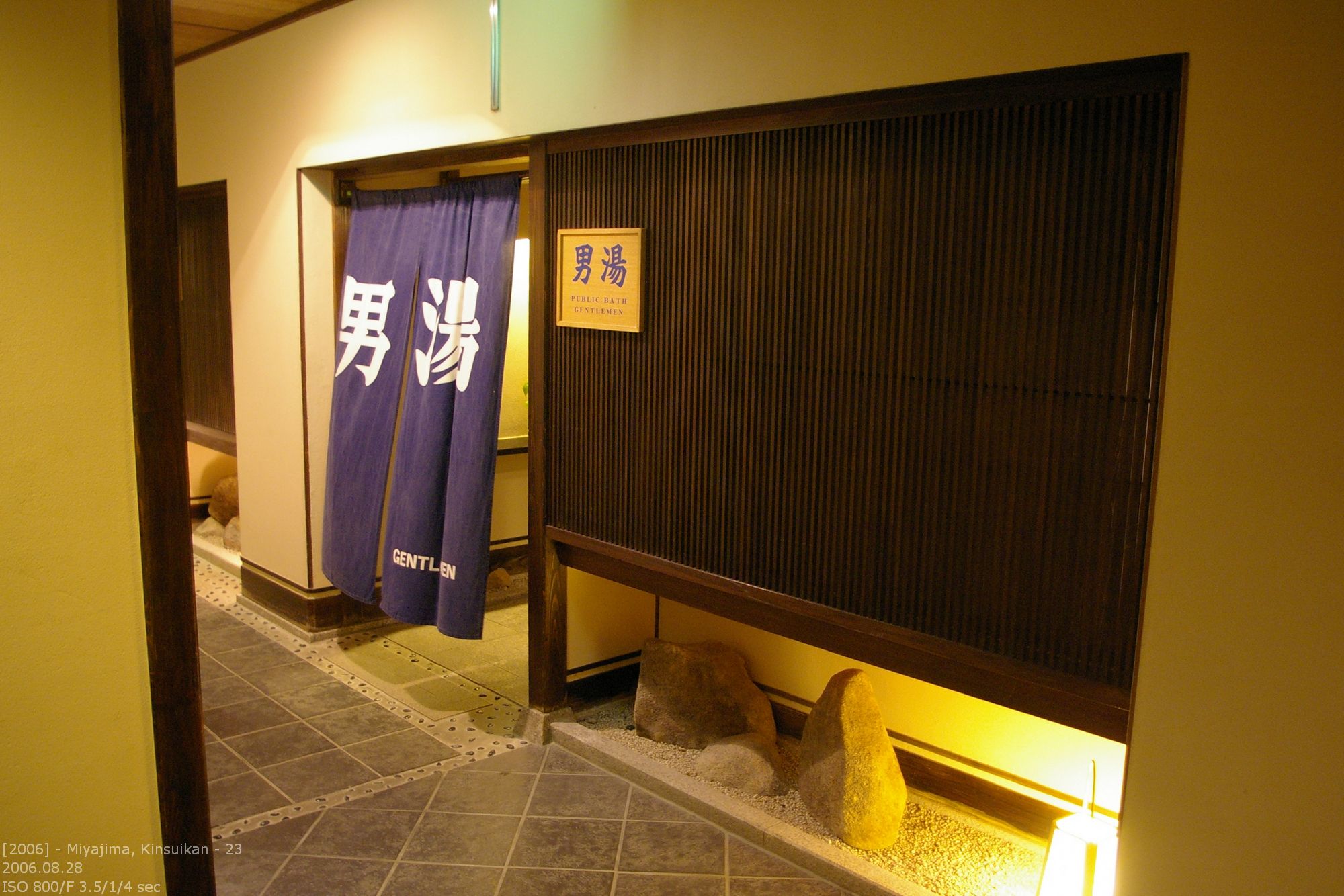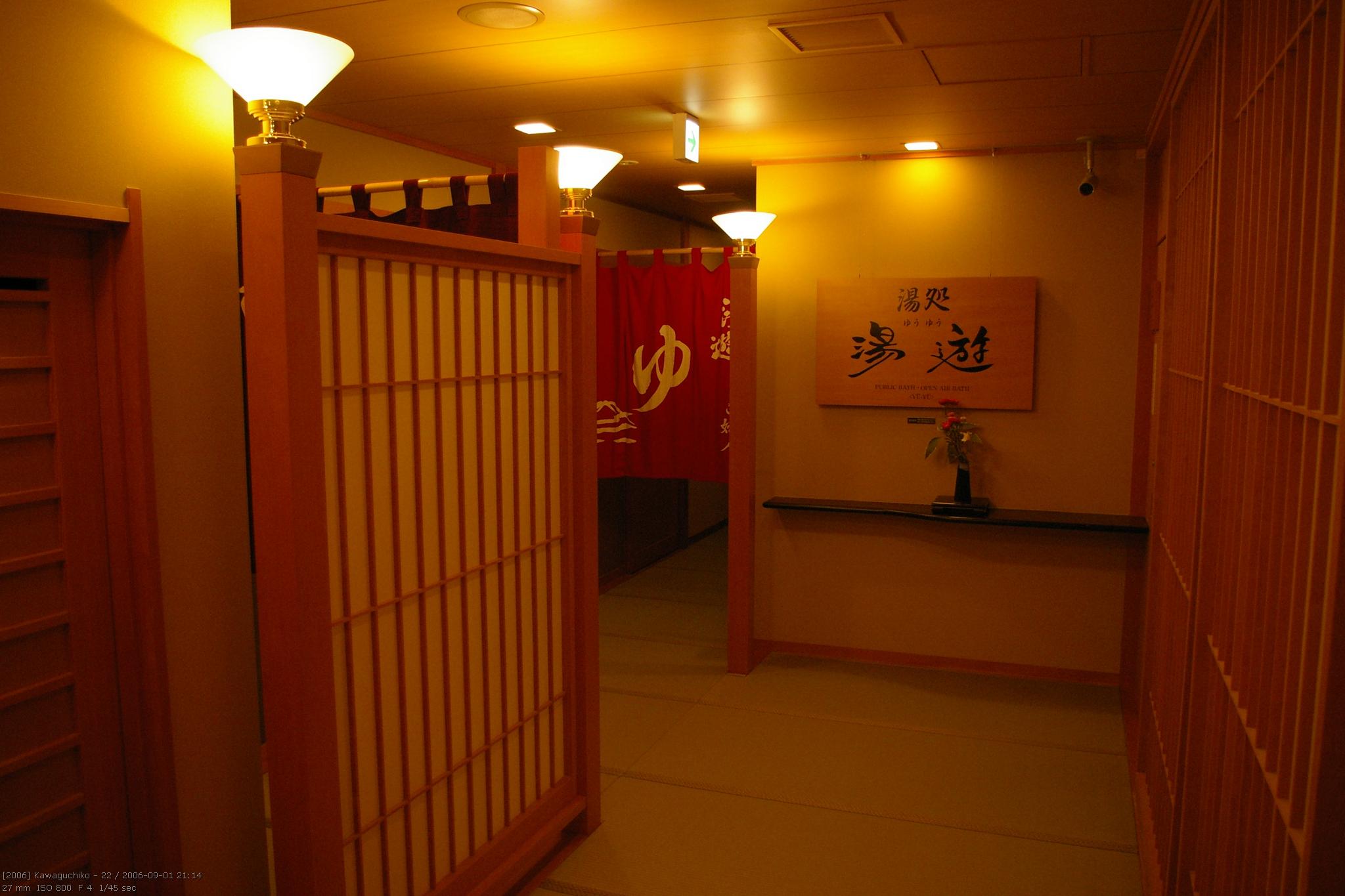It doesn’t if it is a onsen, ofuro, yu, rotenburo or the public bath room in a hotel: There are some very simple rules to follow. You should follow them unless you want to look like a complete idiot or be expelled from the bath. The rules are very simply. No need to worry.
- If you are in Rome (Japan), do it like the Romans (Japanese).
This is not a real rule, but more like a very good advise. Be always low-key (Japanese appreciate self-effacement) und observe how the other behave. You will learn very quick how to act properly. If there is personal around, ask them for guidance. They will help.
Why? Japanese appreciate if foreign people try to learn, understand and follow their rules. They know that it is impossible to learn all the rules. It is important that you try, and if you do mistake, learn and do not redo the mistake again. Because the rules are important for Japanese, they will help you. This rule doesn’t aplly only for onsen, but for all in Japan.
Like in Japanese houses you take of the shoes at the entrance. The border line is a smal step close to the door. In big sento like the Oedo onsen in Tokyo will will change into indoor slippers, that are always to small for European feet.
- Take a shower before you enter the bath tub.
The bath tub is not for cleaning yourself but only for heat up and relax. You have to take shower before and after bathing in the tub. Take a shower very thorougly. There should no soap or shampoo be left on your body.
During the shower you sit on a small stool. Do not stand in the shower and avoid to hit other people with your water. There is a Japanese basic rule behind it: Never ever bother other people with your existance.
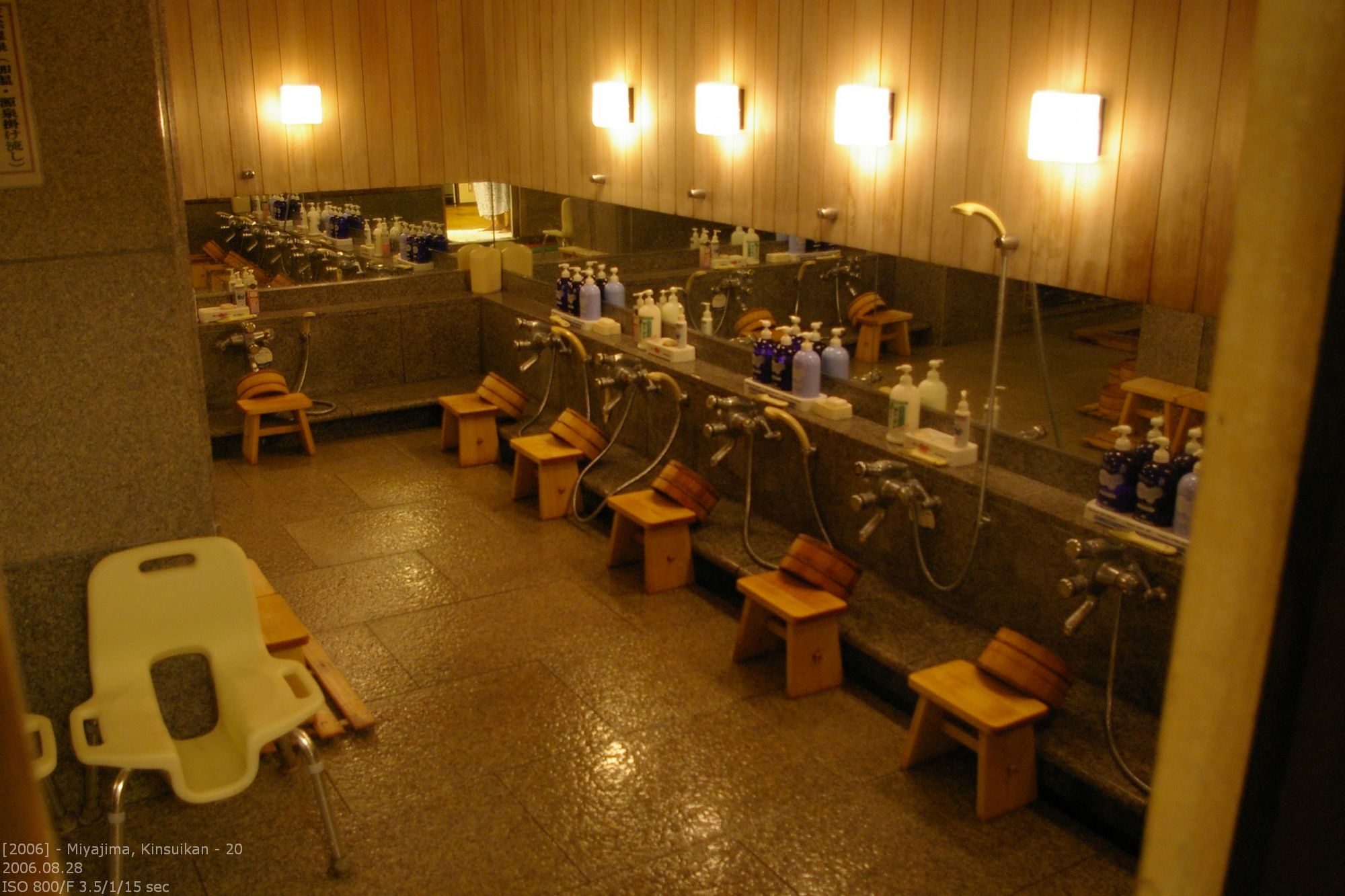
Onsen Miyajima
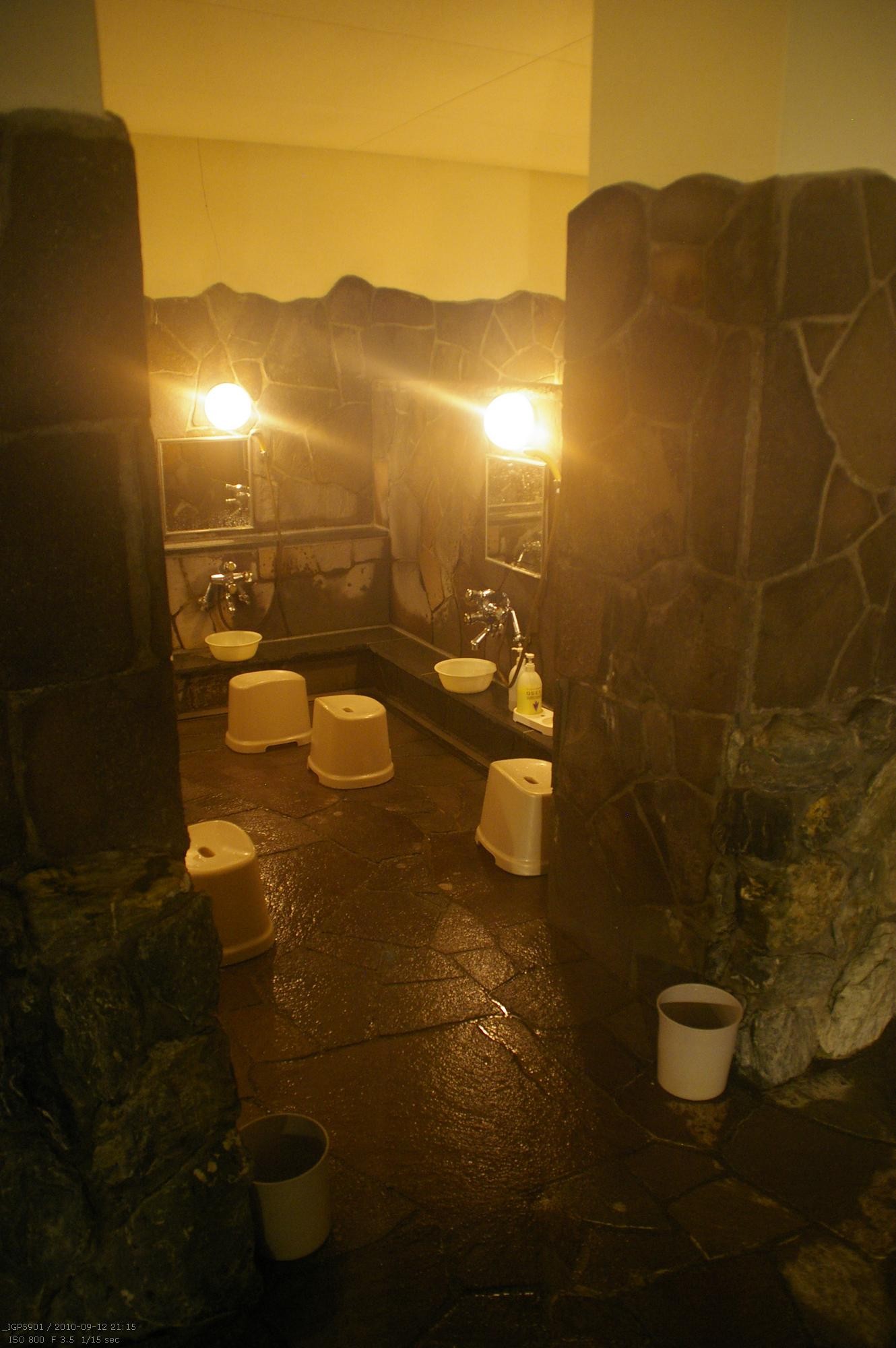
山の上 リゾートペンション (層雲峡温泉) – Public Bath
Duschen
- The small towel always stays out of the bath tub.
If you see a Japanese with a towel, you can be sure that this is not the washing towel from the shower. But there are also many Japanese ignoring this rule. This doesn’t mean that you should do the same. The best position for the towel (not the one from the shower) is on the head. In winter time in a rotenburo this has the advantage that the head is protected against the cold.
- After the bath towel yourself thoroughly before going to the changing room.
- Remember: It is a bathing house not a swimming pool.
You take a bath. You are not swimming around or jump into the water. You take the bath naked. Therefore men and women are seperated.
- In most onsen people with a tatoo are not allowed to enter.
This is due to the history of tatoos in Japan. Only Yakuza (Japanese mafia) had tatoos. This ban also include tine tatoos on your shoulder or ankle and also applies to foreign people. There are onsen that are very strict and other that don’t mind a small western style tatoo. But one thing is sure: Never start an argument. An no is a no.
Of course there are sento that allow tatoos. But these are run by the yakuza. If you take a bath there, you are in company of mobster. I really doubt that you will find such a sento or even get into it.
- It is also not allowed to enter if you have a skin desease or an open wound.
There are many more of these rules. But they are minor and it is not a big deal if you don’t know them. Just learn them by experience. But if you don’t obey the rules above you can get yourself into big trouble. If you did a mistake: Say that you are sorry and promise to behave better in the future. (Notice that not knowing the rules is also bad behaviour in Japan.) Most of the Japanese are reacting positive to an excuse, if they see that your are honestly sorry. Use this situation for small talk. You usually et more information and advices how to behave correctly and not drop an clanger.
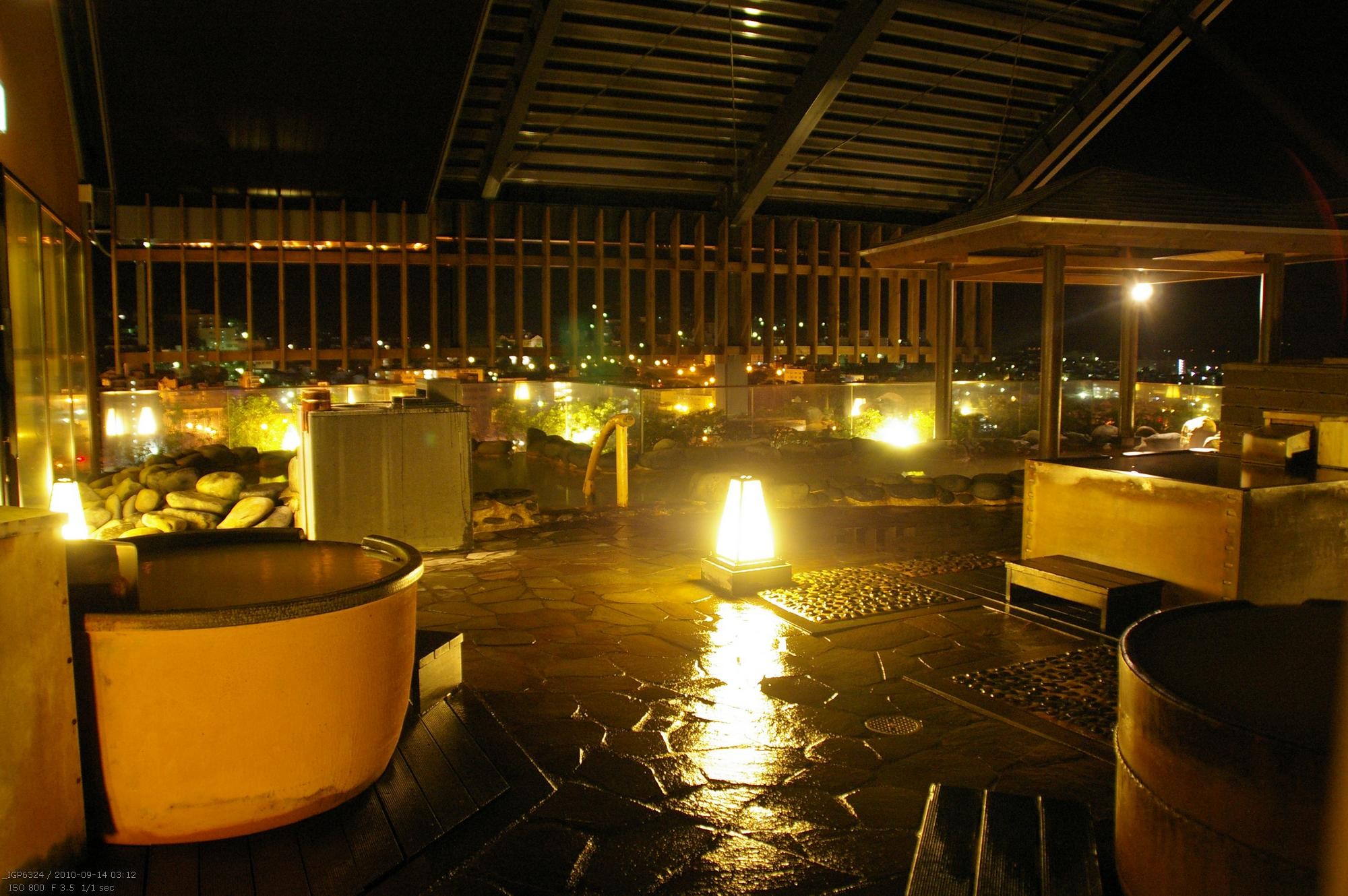
La Vista (函館) – Onsen auf dem Dach
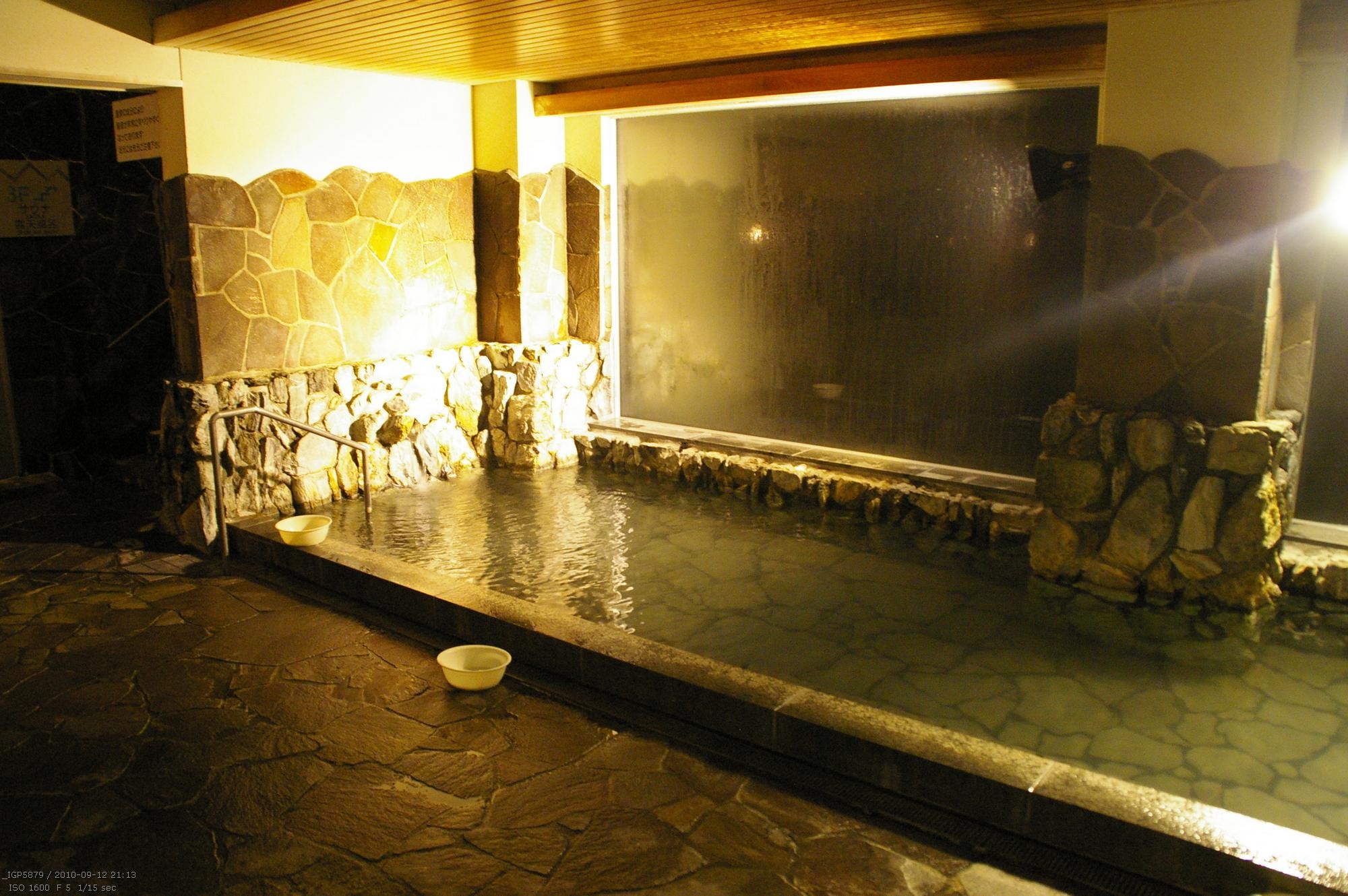
山の上 リゾートペンション (層雲峡温泉) – Public Bath
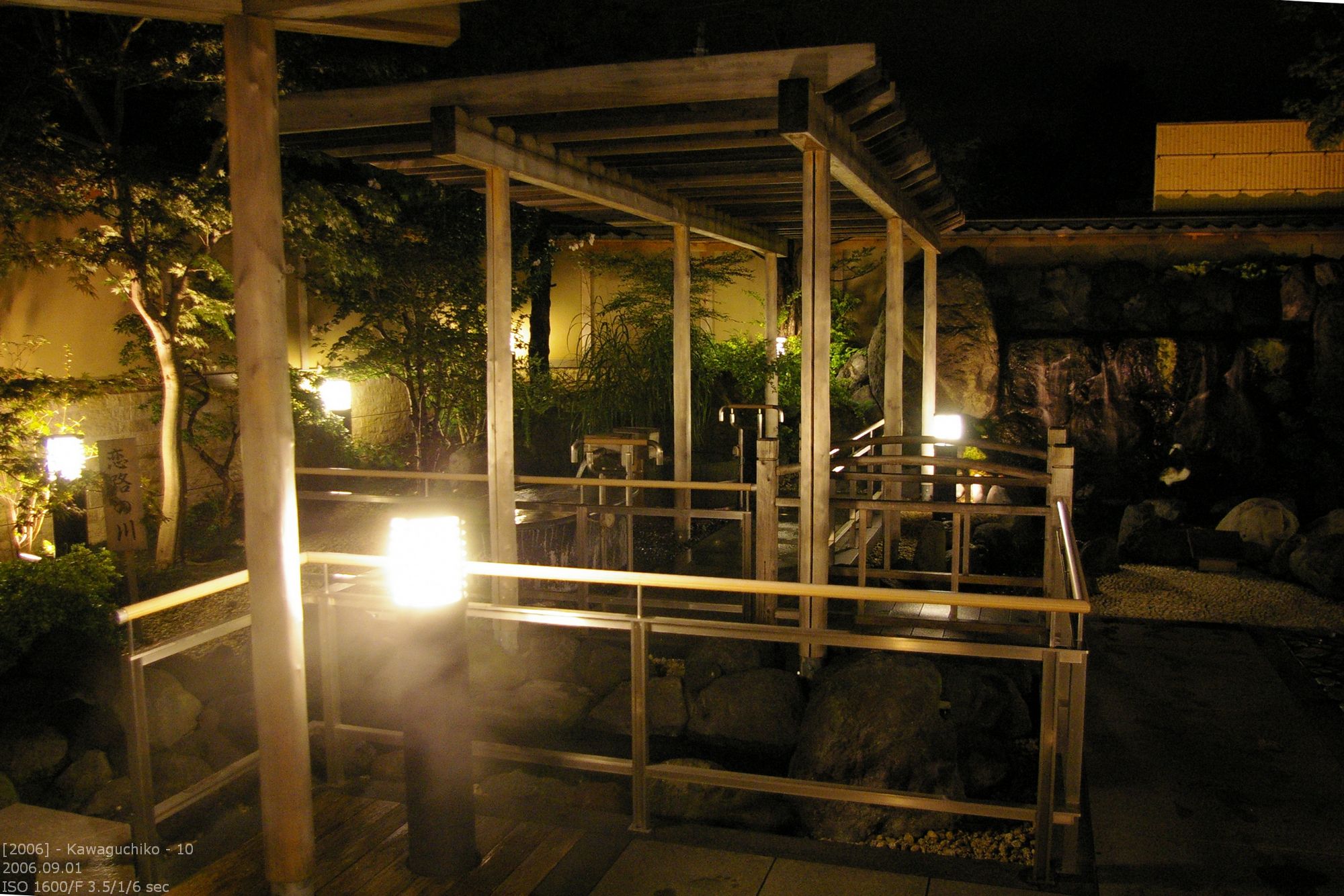
Kawaguchiko Rotenburo
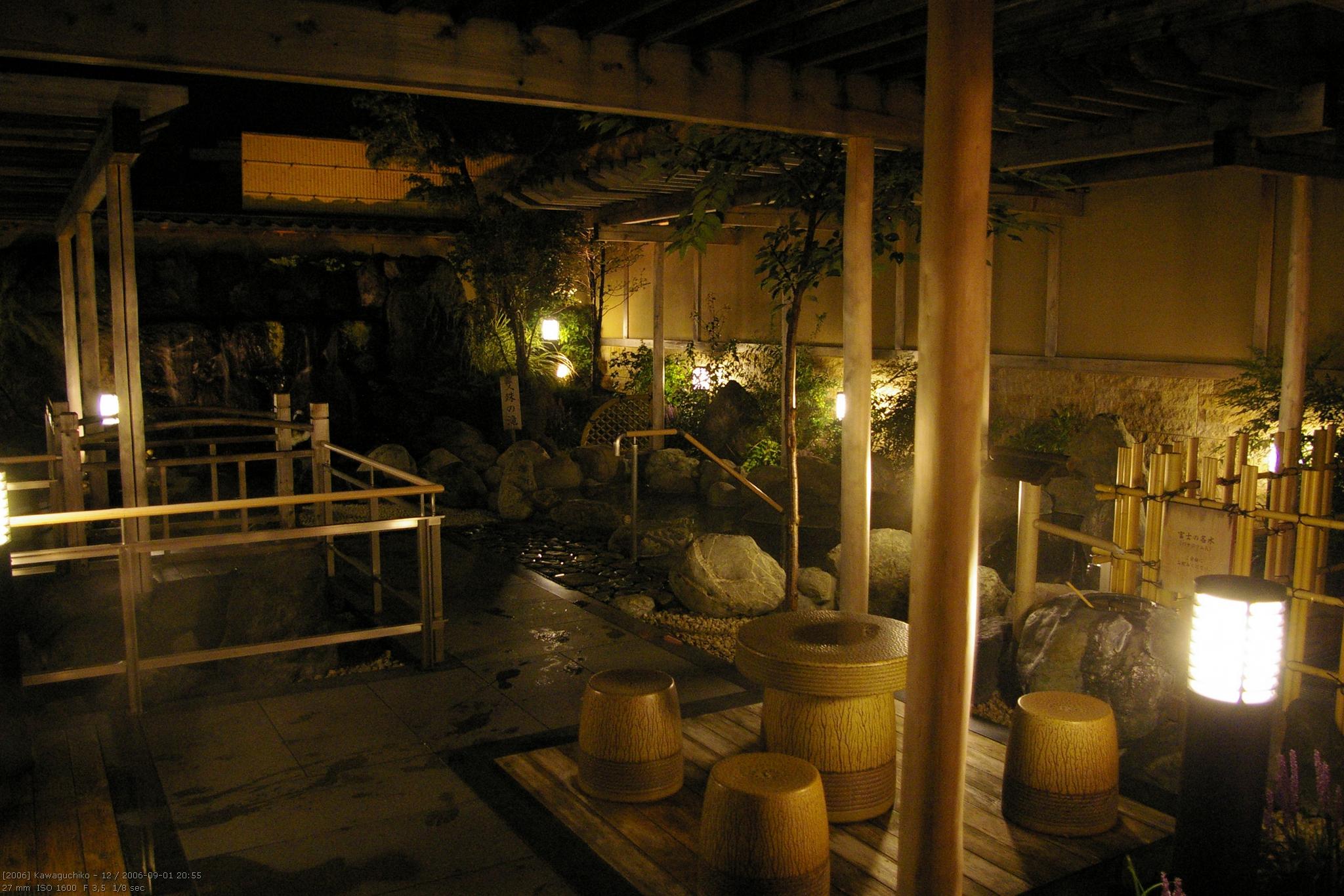
Rotenburo (Fujikawaguchiko)
Awesome Rotenburo
Netsu no Yu (熱の湯)
Stay away from Netsu-no-yu. These are extremly hot onsen. Even a normal one is a challange for western people, because of temperature between 108 and 113°F. A Nestu-no-yu brings it up to 130°F. The water may be cooled down but it is still to hot for unexperienced people. If you are not used to this kind of heat you will give up if your foot is touching the water or you may faint because the circulation collapse.
Sake
Another good advice: Sake and onsen do not match, even if they have the same temperature. There are many anime and manga where you see people in the tub with sake floating around in a wooden bucket. Beside this bucket itself is not allowed in the tub it is also a stupid idea: The heat of the water makes you getting up sooner or later to cool down, but the sake at these temperature makes you sit down before you faint. This really is a challange for your body you shouldn’t underestimate. I tried it. Believe me: It’s a stupid idea.
And never try to bring a camera into a sento and take pictures. This is not only a very big fail on good behaviour but can bring you in deep trouble as well. It is a felony. All my picuteres were taken with the ok of the owner and after alle other guests left the onsen, usually after closing time If you want to take picture, ask politely at the front desk and let yourself accompanied by a member of the staff.
— deutscher Blogeintrag —

